Stan Garfield's Blog, page 11
April 4, 2024
Knowledge Management Thought Leader 65: Johel Brown-Grant
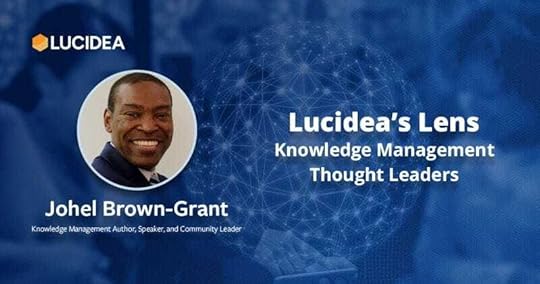
Johel Brown-Grant specializes in using storytelling to create job stories, user journeys, and personas.
He has expertise in implementing knowledge strategies to map knowledge flows, uncover tacit knowledge, and foster an agile environment. Johel applies User Experience (UX) and design thinking methodologies to support product development, using service design to support innovation.
Johel is a storytelling strategist, UX architect, design thinking specialist, and knowledge management professional with extensive experience in enterprise learning, change management, and business storytelling. He speaks and facilitates workshops on the power of storytelling to teach, engage, empower, motivate, and connect learners, leaders, groups, and professional communities across diverse industries and professions. Johel has led important knowledge management and storytelling projects in government, corporate, and academic settings. In his current role at the U.S. State Department, he coordinates enterprise learning efforts across multiple departments.
A former Fulbright scholar, Johel holds master’s degrees in sociolinguistics, literature, and information and knowledge strategy from Universidad de Costa Rica, University of Pittsburgh, and Columbia University in the City of New York, respectively, and a doctorate in communication and rhetoric from Rensselaer Polytechnic Institute.
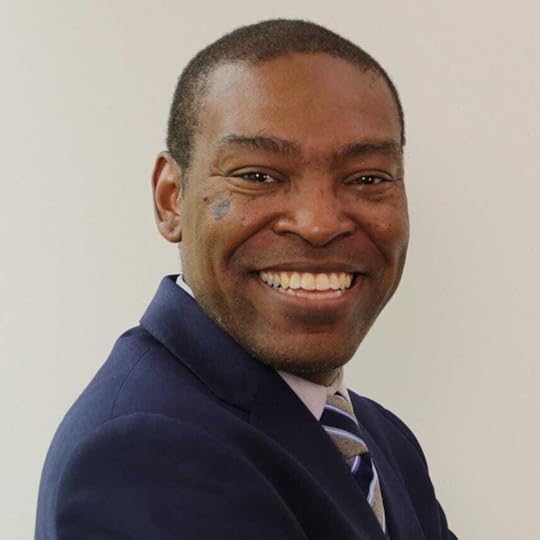
For more about Johel, see Profiles in Knowledge.
Books
 The Impact of Storytelling in Organizational Communications
The Impact of Storytelling in Organizational Communications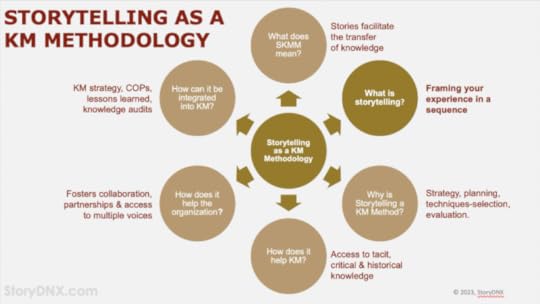 Engagement Strategies to Strengthen Communities of Practice
Engagement Strategies to Strengthen Communities of Practice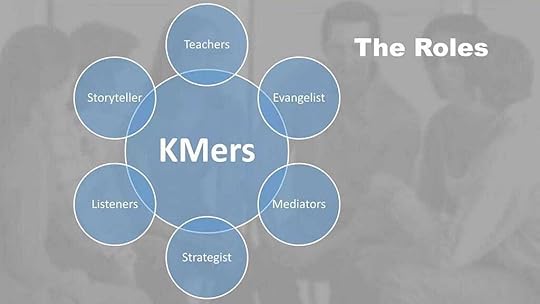 Storytelling as Strategy: How Narrative Shapes Knowledge
Storytelling as Strategy: How Narrative Shapes Knowledge [image error]
[image error]
March 29, 2024
Knowledge Management Thought Leader 64: Mark Britz

Mark Britz is a performance strategist. He helps people and organizations do better by first being better connected, building on their strengths, and identifying opportunities to improve workflow. He specializes in social learning, culture, organizational design, collaboration, social business, and Personal Knowledge Management (PKM).
Mark is Director of Event Programming at The Learning Guild and Workplace Performance Advisor at Social By Design Solutions, his own consultancy. Previously he worked for more than 15 years designing and managing learning solutions with organizations such as Smartforce, Pearson Digital Learning, the SUNY Research Foundation, Aspen Dental Management, and Systems Made Simple. Mark is a frequent writer, speaker, and commenter. He is based in Syracuse, New York.

For more about Mark, see Profiles in Knowledge.
BooksSocial by Design: How to create and scale a collaborative company with James Tyer

Revolutionize Learning & Development: Performance and Innovation Strategy for the Information Age by Clark Quinn — Case Study in Chapter 8: Systems Made Simple
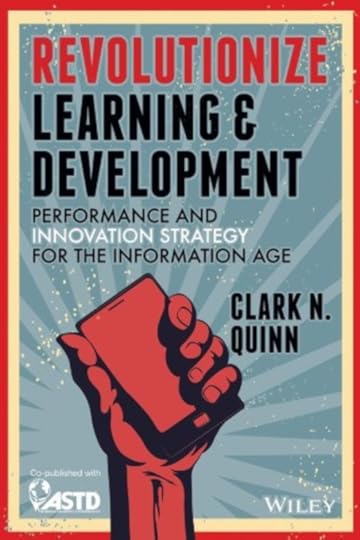 25 Ways to Support Social Learning in Your OrganizationExamine and challenge the existing organizational design.Promote conversation and dialogue.Prioritize people over technology.Create spaces for interaction.Empower employees to take ownership.Be tolerant.Understand the value of both fast and slow conversations.Establish engagement guidelines and parameters for different types of conversations.Make openness and transparency the default.Emphasize the value of negative conversations.Actively participate in and initiate conversations.Lead by example.Be purposeful.Invite critique.Prioritize psychological safety.Demonstrate leadership participation.Align conversations with business strategy.Share information on impact.Be a bridge.Embrace a learning culture.Foster a sense of shared purpose.Balance competition and collaboration.Leverage technology.Continuously evaluate and adapt.Have patience.Social Learning at Work: Quick Start GuidePractice Transparency and Openness: Show Your Work/ Work Out Loud. Begin by ensuring that all important but not sensitive work is accessible and encourage observation and input by all levels of the organization.Reward & Recognize: Be visible in thanking, acknowledging and rewarding sharing and cooperative behaviors. Be diligent in encouraging open sharing of ideas, resources and collaboration. Recognize and praise group inputs and outcomes. Model exactly what you want to see. Encourage leaders to model exactly what you want to see.Encourage Curation over Creation: Share resources with the added “why” of its personal value to you — add context. Ensure access to outside information and to internal channels to share. Identify models of proper vetting and context-adding to aid in the movement of best of kind resources and information quickly through the organization.Formalize Social Technology: Use traditional communication channels (email, meetings) to move people to increased participation on social platforms. Create a simple structure for groups and keep them open vs. closed or private. Have employees complete profiles with an emphasis on skills and interests over titles. Nudge large group emails to be posted on social platforms. Ask sincere questions, to which the answers will help and inform your work.The impact of organizational design on knowledge sharing
25 Ways to Support Social Learning in Your OrganizationExamine and challenge the existing organizational design.Promote conversation and dialogue.Prioritize people over technology.Create spaces for interaction.Empower employees to take ownership.Be tolerant.Understand the value of both fast and slow conversations.Establish engagement guidelines and parameters for different types of conversations.Make openness and transparency the default.Emphasize the value of negative conversations.Actively participate in and initiate conversations.Lead by example.Be purposeful.Invite critique.Prioritize psychological safety.Demonstrate leadership participation.Align conversations with business strategy.Share information on impact.Be a bridge.Embrace a learning culture.Foster a sense of shared purpose.Balance competition and collaboration.Leverage technology.Continuously evaluate and adapt.Have patience.Social Learning at Work: Quick Start GuidePractice Transparency and Openness: Show Your Work/ Work Out Loud. Begin by ensuring that all important but not sensitive work is accessible and encourage observation and input by all levels of the organization.Reward & Recognize: Be visible in thanking, acknowledging and rewarding sharing and cooperative behaviors. Be diligent in encouraging open sharing of ideas, resources and collaboration. Recognize and praise group inputs and outcomes. Model exactly what you want to see. Encourage leaders to model exactly what you want to see.Encourage Curation over Creation: Share resources with the added “why” of its personal value to you — add context. Ensure access to outside information and to internal channels to share. Identify models of proper vetting and context-adding to aid in the movement of best of kind resources and information quickly through the organization.Formalize Social Technology: Use traditional communication channels (email, meetings) to move people to increased participation on social platforms. Create a simple structure for groups and keep them open vs. closed or private. Have employees complete profiles with an emphasis on skills and interests over titles. Nudge large group emails to be posted on social platforms. Ask sincere questions, to which the answers will help and inform your work.The impact of organizational design on knowledge sharing Map the Systems
Map the Systems
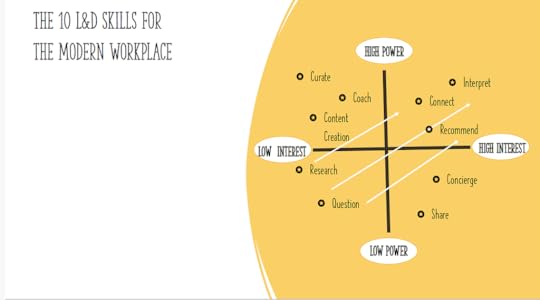 [image error]
[image error]
March 22, 2024
Knowledge Management Thought Leader 63: Nick Bontis
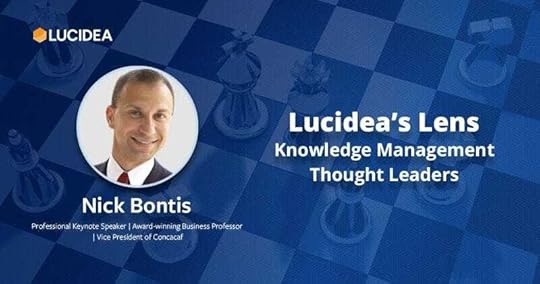
Nick Bontis is Chair of Strategic Management at the DeGroote School of Business, McMaster University in Hamilton, Ontario, Canada. He is also the Director of the Institute for Intellectual Capital Research, a management consulting firm and research think-tank that specializes in conducting human capital diagnostic assessments for corporate and government clients.
His research focuses on business performance, intellectual capital, knowledge management, organizational learning, collaboration, human capital measurement, and digital transformation. Nick has expertise in leadership and productivity, management of change, information overload, knowledge sharing, innovation and creativity, team collaboration, and talent retention.

For more about Nick, see Profiles in Knowledge.
Selected Books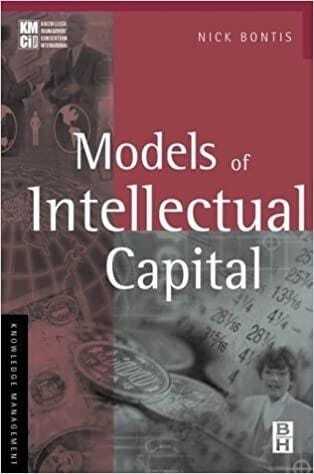

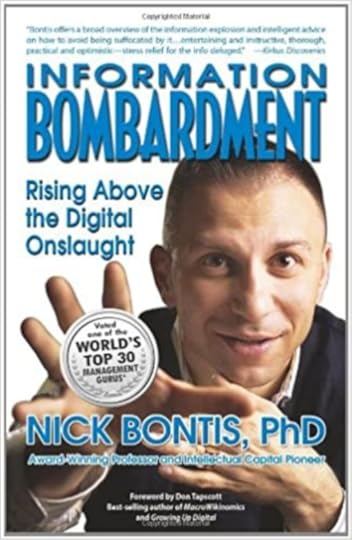
 Intellectual capital ROI: a causal map of human capital antecedents and consequents
Intellectual capital ROI: a causal map of human capital antecedents and consequents KM 101 Workshop
KM 101 Workshop

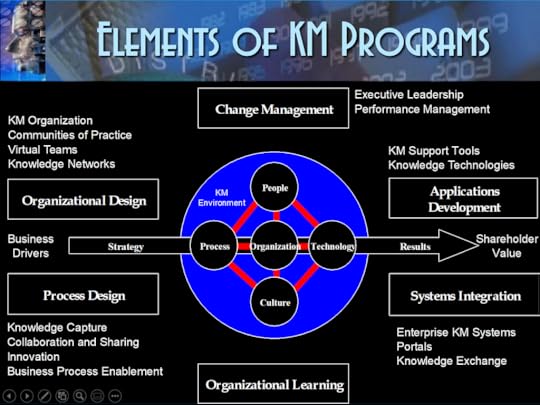
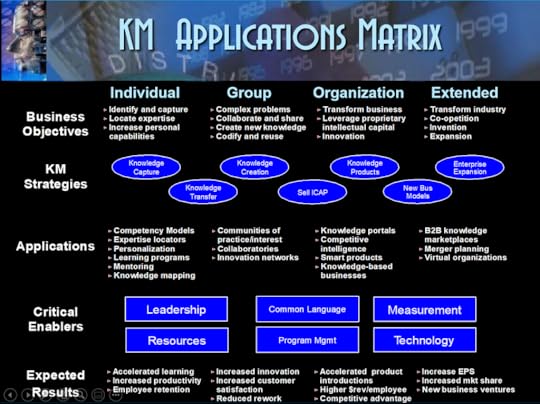
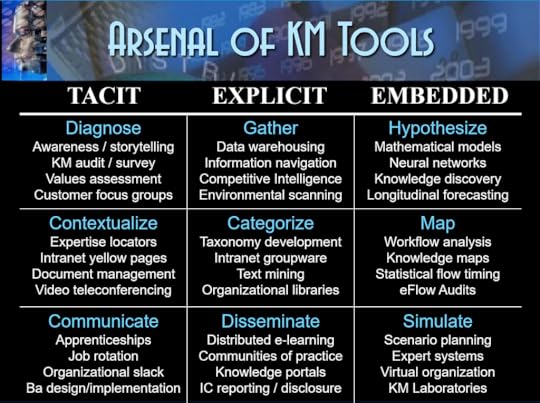 Intellectual Capital: Five Ways to Keep it From Walking Out the DoorPLAN — Succession planning must be implemented for all employees in the organization. That includes everyone from the CEO down to the call-centre representative. If an employee has a known trajectory for departure — retirement, back to school, maternity leave — a replacement hire must be made early enough to allow for job shadowing to occur. The rule of thumb is to allow one week of job shadowing for each year of employment. Indeed, there is a financial cost for having two people do the same job for a short period. But, the opportunity cost of not having knowledge continuity in place is even worse.DEVELOP — Develop a corporate online Yellow Pages. In other words, find out and classify who knows what. In this exercise, the talent and expertise of every single employee should be documented in a searchable file that resides on the company’s intranet. This way, when you are looking for important information or a key contact, you can just type in a search term and zap, you know exactly who to go to for the answer. Don’t forget, we typically waste more than 25 per cent of our time at work looking for answers to questions that someone else in the company already has.COMMUNICATE — Exit interviews are a must for every single departing employee. The biggest mistake companies make is having someone from HR conduct the interview. The best way is to hire an independent firm to conduct the interview by phone and collect further information using an online survey. The departing employee will be more honest with an interviewer they have no ties to and at the same time, you protect sensitive data. Once the vendor collects information from five or more departing employees, results can be reported back to the organization in aggregate, thereby ensuring confidentiality. And don’t forget that the most important question to ask in an exit interview is: what do you know that nobody else in the firm knows?CREATE — A very hot trend right now is to develop an alumni database of all former employees. Universities do it, so why can’t businesses? These past employees can become a huge source of intellectual capital for your organization. You can use them for focus groups, as test clients, as secret shoppers and you can even bounce ideas off them before new services hit the market. By maintaining a useful relationship with alumni, they might come back again in the future as employees.ENFORCE — An enormous risk for knowledge-intensive organizations is the threat of departing employees taking critical files with them (e.g., client lists, blueprints, marketing plans). Information ownership and usage policies must be communicated to current employees so they clearly understand who owns your company’s data. It is important for this issue to be addressed explicitly during the orientation of new employees. Have in your arsenal non-competition and non-solicitation agreements or clauses in employment contracts and when employees join your firm, make them sign it. At the end of the day, it’s your intellectual capital that can make or break your organization’s performance. Be sure to safeguard it.
Intellectual Capital: Five Ways to Keep it From Walking Out the DoorPLAN — Succession planning must be implemented for all employees in the organization. That includes everyone from the CEO down to the call-centre representative. If an employee has a known trajectory for departure — retirement, back to school, maternity leave — a replacement hire must be made early enough to allow for job shadowing to occur. The rule of thumb is to allow one week of job shadowing for each year of employment. Indeed, there is a financial cost for having two people do the same job for a short period. But, the opportunity cost of not having knowledge continuity in place is even worse.DEVELOP — Develop a corporate online Yellow Pages. In other words, find out and classify who knows what. In this exercise, the talent and expertise of every single employee should be documented in a searchable file that resides on the company’s intranet. This way, when you are looking for important information or a key contact, you can just type in a search term and zap, you know exactly who to go to for the answer. Don’t forget, we typically waste more than 25 per cent of our time at work looking for answers to questions that someone else in the company already has.COMMUNICATE — Exit interviews are a must for every single departing employee. The biggest mistake companies make is having someone from HR conduct the interview. The best way is to hire an independent firm to conduct the interview by phone and collect further information using an online survey. The departing employee will be more honest with an interviewer they have no ties to and at the same time, you protect sensitive data. Once the vendor collects information from five or more departing employees, results can be reported back to the organization in aggregate, thereby ensuring confidentiality. And don’t forget that the most important question to ask in an exit interview is: what do you know that nobody else in the firm knows?CREATE — A very hot trend right now is to develop an alumni database of all former employees. Universities do it, so why can’t businesses? These past employees can become a huge source of intellectual capital for your organization. You can use them for focus groups, as test clients, as secret shoppers and you can even bounce ideas off them before new services hit the market. By maintaining a useful relationship with alumni, they might come back again in the future as employees.ENFORCE — An enormous risk for knowledge-intensive organizations is the threat of departing employees taking critical files with them (e.g., client lists, blueprints, marketing plans). Information ownership and usage policies must be communicated to current employees so they clearly understand who owns your company’s data. It is important for this issue to be addressed explicitly during the orientation of new employees. Have in your arsenal non-competition and non-solicitation agreements or clauses in employment contracts and when employees join your firm, make them sign it. At the end of the day, it’s your intellectual capital that can make or break your organization’s performance. Be sure to safeguard it.Initiatives to Strategically Manage Intellectual Capital
Conduct an initial intellectual capital audit. Such an examination may include designing and administering a diagnostic survey using Likert-type scales to get a snapshot of the benchmark level of intellectual capital in existence.Make knowledge management a requirement in evaluating each employee and assign personal targets for intellectual capital development. For example, have each employee learn something the organization currently does not know and document that knowledge into a searchable database or corporate yellow pages.Formally define the role of knowledge in your business and in your industry. Find and secure the greatest resources for intellectual capital inside and outside your firm from such sources as industry associations, academia, customers, suppliers, and government. Also support the marketing department with a competitive intelligence strategy.Recruit a leader responsible for developing intellectual capital. This person must have an integrated background in human resources, strategy, and IT. A Chief Knowledge Officer is different than a Chief Learning Officer: The former is responsible for how human capital can be leveraged for sustainable advantage; the latter is responsible for developing and implementing the corporate training strategy.Classify your intellectual portfolio by producing a knowledge map of your organization. Determine where knowledge resides, in what specific people as well as systems. For example, create a central database in which all project-based information can be accumulated and accessed.Use information systems and information-sharing tools that aid in knowledge exchange and codifying. Such tools include groupware — message boards, video-teleconferencing, intranets, knowledge exchanges, corporate universities, and storytelling.Send employees to conferences and trade shows. Do not pay for their travel unless they share what they learned with the rest of the organization when they return. Increase ROI on training.Consistently conduct intellectual capital audits to re-evaluate the organization’s knowledge accumulation. Use monetary values if possible, but do not be afraid to develop customized indexes and metrics.Identify gaps that must be filled based on weaknesses relative to competitors, customers, suppliers, and best practices. Start benchmarking your turnover ratios and training investment rates compared with your competitors.Assemble the organization’s knowledge portfolio into an intellectual capital addendum to the annual report.[image error]March 15, 2024
Knowledge Management Thought Leader 62: Max Boisot
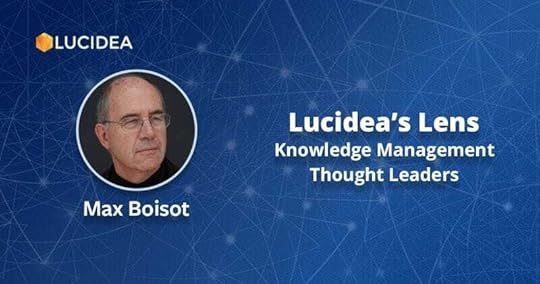
The late Max Boisot (1943-2011) was a British architect and management consultant who was professor of Strategic Management at the ESADE business school in Barcelona. Max was known for his ideas about the information economy, the Information Space, social capital, and social learning theory.
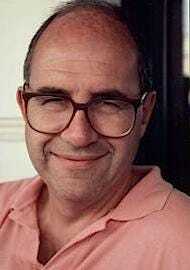
For more about Max, see Profiles in Knowledge.
Books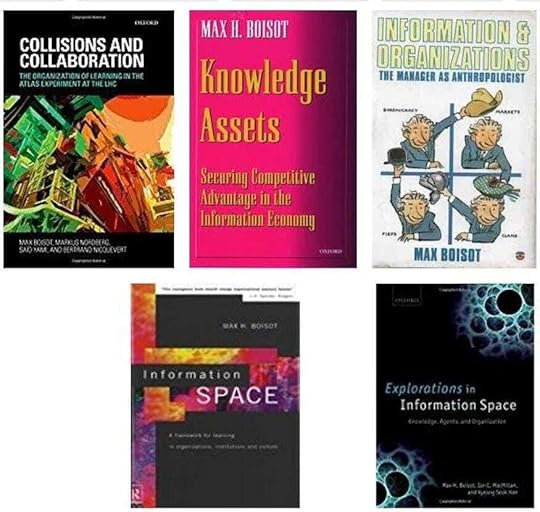 Selected ResearchGate Articles and ChaptersGenerating knowledge in a connected world: The case of the ATLAS experiment at CERNConnectivity, Extremes, and Adaptation: A Power-Law Perspective of Organizational Effectiveness — with Bill McKelveyWorking the System: Toward a Theory of Cultural and Institutional Competence — with John Child and Gordon ReddingComplexity Science: A Bridge between Modernist and Postmodernist Perspectives on Organizations? — with Bill McKelveyExplorations in Information Space: Knowledge, Actors, and Firms — with Ian C MacMillan and Kyeong HanCodification, Abstraction, and Firm Differences: A Cognitive Information‐based Perspective — with Ian C MacMillan and Kyeong HanData, Information, and Knowledge: Have We Got It Right? — with Ian C MacMillan and Kyeong HanOrganizational versus Market Knowledge: From Concrete Embodiment to Abstract Representation — with Ian C MacMillan and Kyeong HanThe spatial dimension of knowledge flows: A simulation approach — with Agustí Canals and Ian C MacMillanAre There Any Competencies Out There? Identifying and Using Technical Competencies — with Dorothy GriffithsSpeeding up strategic foresight in a dangerous and complex world: A complexity approach — with Bill McKelveyEvolution of knowledge management strategies in organizational populations: a simulation model — with Agustí Canals and Ian C MacMillanKnowledge management strategies and spatial structure of geographic industrial clusters: a simulation approach — with Agustí Canals and Ian C MacMillanSimulating I-Space (SIS): An Agent-based Approach to Modeling Knowledge Flows — with Ian C MacMillanSim-I-Space: An Agent-Based Modelling Approach To Knowledge Management Processes — with Ian C MacMillan, Kyeong Han, and Si Hyung EunCrossing Epistemological Boundaries: Managerial and Entrepreneurial Approaches to Knowledge Management — with Ian C MacMillanExploring the information space: A strategic perspective on information systemsPossession is nine tenths of the law: managing a firm’s knowledge base in a regime of weak appropriability — with Dorothy GriffithsStrategies for managing knowledge assets: A tale of two companies — with Dorothy Griffiths and Veronica MoleThe Codification and Diffusion of Knowledge in the Transactional Strategy ff FirmsCynefin Co. Guest Blog PostsStarbucks and Complexity: As a frequent consumer of its products, I have often pondered the Starbucks phenomenon. A ‘Tall’ tea at Starbucks cost one pound sterling and 45 pence. To get your tall tea, you may have to stand in line for anything between ten and fifteen minutes waiting to be served — often longer at airports.On the value of irresponsibility: You have a public self and a private self. The public self is what you hold yourself out to be and are willing to take responsibility for; the private self, on the other hand, you may be able to do little about.Confidence Tricks: Pragmatists like Charles Peirce and William James define knowledge to be beliefs that had cash value — i.e., that you would be willing to act upon. Last week, accountholders in Britain’s fifth largest mortgage lender, Northern Rock, brought to light a perverse way of looking at the Peirce-James definition of knowledge by acting on beliefs that had no-cash value, thus triggering the first bank run in Britain since 1866.Algorithms: According to an article in The Economist (“Business by numbers”), algorithms have become the instruction manuals for a host of routine consumer transactions. Amazon, for example, uses algorithms to help the company recommend further purchases “in the neighborhood” of your new purchase.Profiting from neural congestion: Some years back, Ken Livingstone, the Mayor of London introduced congestion charging for road vehicles wanting to occupy Central London’s road network during working hours. This makes sense since the supply of Central London roads is inherently limited and the demand for central London roads keeps increasing.The Unprincipled Principle of Least Effort: In 1949 George Zipf, a Harvard linguistics professor, published Human Behavior and the Principle of Least Effort: An Introduction to Human Ecology. What became known as Zipf’s law inversely relates the ‘size’ of an occurrence of an event to its ‘rank’.Knowledge for its own sake? I have been helping to prepare a workshop that will be held at CERN just outside Geneva. CERN, you will recall, is where the Large Hadron Collider (LHC), a particle accelerator that is 27-kilometer in circumference, is being built in order to test for the existence of a tiny and elusive particle.How Real is the Real Thing? I often drop in at the Gran Sitges Hotel for a drink. The hotel is conveniently located at the foot of the hill on which my house is located. Three days ago, I went into the bar and asked for Diet Coke. I was told that there was none and was offered Diet Pepsi instead.How to make rows more creative: I often write papers with my friend Bill McKelvey, professor of strategic organizing at UCLA. It works like this. He flies into Barcelona and stays with my wife and me for a few days. He admires the view of the sea from my terrace and we go for frequent walks.Codifying sheep in your sleep: I have always been interested in the nature of codification, the process in which phenomena are assigned to socially agreed upon categories. Codification is typically presented as a quintessentially soporific activity. Under the tyranny of codification, the habitual insomniac, instead of just counting the sheep jumping over fences to get herself to sleep, is required to classify them as they jump.What is maturity, anyway? My 19-year-old son tells me that I am immature. At his age, my eldest daughter — now 38 — said the same thing. That was nineteen years ago. I have had nineteen years to mature and now appear to have passed up the opportunity.When is a queue not a queue? The other day I found myself being reprimanded — ever so nicely — for queue jumping. I was heading for a specialized department in a London hospital. At the entrance to the building five people were standing around in no particular spatial configuration and clearly de-coupled from each other.On being what I am not: I am a novice blogger. Dave Snowden invited me to blog for a couple of weeks on this website and I decided that I would try it out for fun. However, I feel a bit like a country cousin from Iowa gate crashing a New York fancy dress party.The I-Space: a framework for analyzing the evolution of social computing with Benita CoxAbstract
Selected ResearchGate Articles and ChaptersGenerating knowledge in a connected world: The case of the ATLAS experiment at CERNConnectivity, Extremes, and Adaptation: A Power-Law Perspective of Organizational Effectiveness — with Bill McKelveyWorking the System: Toward a Theory of Cultural and Institutional Competence — with John Child and Gordon ReddingComplexity Science: A Bridge between Modernist and Postmodernist Perspectives on Organizations? — with Bill McKelveyExplorations in Information Space: Knowledge, Actors, and Firms — with Ian C MacMillan and Kyeong HanCodification, Abstraction, and Firm Differences: A Cognitive Information‐based Perspective — with Ian C MacMillan and Kyeong HanData, Information, and Knowledge: Have We Got It Right? — with Ian C MacMillan and Kyeong HanOrganizational versus Market Knowledge: From Concrete Embodiment to Abstract Representation — with Ian C MacMillan and Kyeong HanThe spatial dimension of knowledge flows: A simulation approach — with Agustí Canals and Ian C MacMillanAre There Any Competencies Out There? Identifying and Using Technical Competencies — with Dorothy GriffithsSpeeding up strategic foresight in a dangerous and complex world: A complexity approach — with Bill McKelveyEvolution of knowledge management strategies in organizational populations: a simulation model — with Agustí Canals and Ian C MacMillanKnowledge management strategies and spatial structure of geographic industrial clusters: a simulation approach — with Agustí Canals and Ian C MacMillanSimulating I-Space (SIS): An Agent-based Approach to Modeling Knowledge Flows — with Ian C MacMillanSim-I-Space: An Agent-Based Modelling Approach To Knowledge Management Processes — with Ian C MacMillan, Kyeong Han, and Si Hyung EunCrossing Epistemological Boundaries: Managerial and Entrepreneurial Approaches to Knowledge Management — with Ian C MacMillanExploring the information space: A strategic perspective on information systemsPossession is nine tenths of the law: managing a firm’s knowledge base in a regime of weak appropriability — with Dorothy GriffithsStrategies for managing knowledge assets: A tale of two companies — with Dorothy Griffiths and Veronica MoleThe Codification and Diffusion of Knowledge in the Transactional Strategy ff FirmsCynefin Co. Guest Blog PostsStarbucks and Complexity: As a frequent consumer of its products, I have often pondered the Starbucks phenomenon. A ‘Tall’ tea at Starbucks cost one pound sterling and 45 pence. To get your tall tea, you may have to stand in line for anything between ten and fifteen minutes waiting to be served — often longer at airports.On the value of irresponsibility: You have a public self and a private self. The public self is what you hold yourself out to be and are willing to take responsibility for; the private self, on the other hand, you may be able to do little about.Confidence Tricks: Pragmatists like Charles Peirce and William James define knowledge to be beliefs that had cash value — i.e., that you would be willing to act upon. Last week, accountholders in Britain’s fifth largest mortgage lender, Northern Rock, brought to light a perverse way of looking at the Peirce-James definition of knowledge by acting on beliefs that had no-cash value, thus triggering the first bank run in Britain since 1866.Algorithms: According to an article in The Economist (“Business by numbers”), algorithms have become the instruction manuals for a host of routine consumer transactions. Amazon, for example, uses algorithms to help the company recommend further purchases “in the neighborhood” of your new purchase.Profiting from neural congestion: Some years back, Ken Livingstone, the Mayor of London introduced congestion charging for road vehicles wanting to occupy Central London’s road network during working hours. This makes sense since the supply of Central London roads is inherently limited and the demand for central London roads keeps increasing.The Unprincipled Principle of Least Effort: In 1949 George Zipf, a Harvard linguistics professor, published Human Behavior and the Principle of Least Effort: An Introduction to Human Ecology. What became known as Zipf’s law inversely relates the ‘size’ of an occurrence of an event to its ‘rank’.Knowledge for its own sake? I have been helping to prepare a workshop that will be held at CERN just outside Geneva. CERN, you will recall, is where the Large Hadron Collider (LHC), a particle accelerator that is 27-kilometer in circumference, is being built in order to test for the existence of a tiny and elusive particle.How Real is the Real Thing? I often drop in at the Gran Sitges Hotel for a drink. The hotel is conveniently located at the foot of the hill on which my house is located. Three days ago, I went into the bar and asked for Diet Coke. I was told that there was none and was offered Diet Pepsi instead.How to make rows more creative: I often write papers with my friend Bill McKelvey, professor of strategic organizing at UCLA. It works like this. He flies into Barcelona and stays with my wife and me for a few days. He admires the view of the sea from my terrace and we go for frequent walks.Codifying sheep in your sleep: I have always been interested in the nature of codification, the process in which phenomena are assigned to socially agreed upon categories. Codification is typically presented as a quintessentially soporific activity. Under the tyranny of codification, the habitual insomniac, instead of just counting the sheep jumping over fences to get herself to sleep, is required to classify them as they jump.What is maturity, anyway? My 19-year-old son tells me that I am immature. At his age, my eldest daughter — now 38 — said the same thing. That was nineteen years ago. I have had nineteen years to mature and now appear to have passed up the opportunity.When is a queue not a queue? The other day I found myself being reprimanded — ever so nicely — for queue jumping. I was heading for a specialized department in a London hospital. At the entrance to the building five people were standing around in no particular spatial configuration and clearly de-coupled from each other.On being what I am not: I am a novice blogger. Dave Snowden invited me to blog for a couple of weeks on this website and I decided that I would try it out for fun. However, I feel a bit like a country cousin from Iowa gate crashing a New York fancy dress party.The I-Space: a framework for analyzing the evolution of social computing with Benita CoxAbstractAdvances in the design of computer architectures and networks have led to new ways of representing, creating, manipulating and distributing knowledge. This paper takes a sociotechnical view of computing and considers the impact of computer architectures which are based on connectionist principles and the growth in computer networks on the representation of the learning process and strategies for dealing with complexity. It calls for a new economic view of knowledge and intellectual property rights more appropriate for the analysis of information flows in networks. Finally, the Information Space (I-Space) is presented as a framework for the analysis and evaluation of information flows.
Section snippetsA theory of information flows
The Information Space, or I-Space, is a conceptual model that relates data structuring to data sharing among a population of data processors. It has to date only been applied in situations where data processing agents have been individual human beings or organizations and institutions made up of these.
Institutional mappings
If we equate serial and connectionist architectures with transactional structures, where might we locate them in the I-Space? One feature that distinguishes serial and connectionist processes is the extent to which computational activity is under central control. It can be argued that serial processes require central coordination and are therefore likely to be located to the left along the diffusion dimension of the I-Space. Connectionist processes, by contrast, can be decentralized.
The microelectronic revolution in the I-Space
To be viable, a political economy of information requires an integrated theory of information production and exchange. Serial and connectionist models of computation might plausibly be viewed as alternative accounts of information production and exchange. The I-Space provides a conceptual framework that brings them together in a single unified representation and hence contributes to the kind of theory building that is needed.
Conclusions
What are the implications of the foregoing for the emerging disciplines of knowledge management? Knowledge is not data, nor is it information. It is a dispositional state that is modified by the receipt of information. In the language of neural networks, it is a given node’s predisposition to fire. New information, by modifying connection strengths, modifies that predisposition. Information, however, has to be extracted from data.
Images
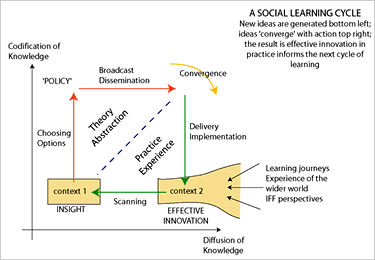
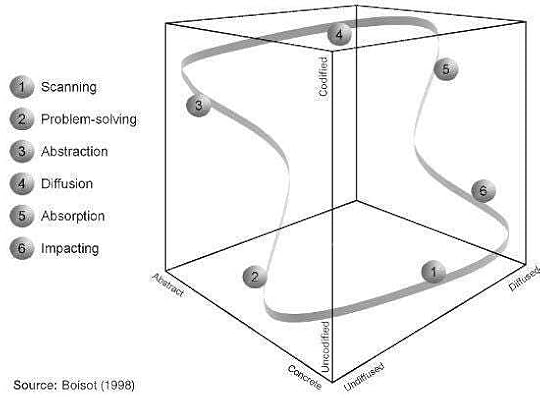 [image error]
[image error]
March 8, 2024
Mary Abraham: Profiles in Knowledge

This is the 101st article in the Profiles in Knowledge series featuring thought leaders in knowledge management. V. Mary Abraham is an author, consultant, and facilitator. Active in the legal industry since 1991, she practiced corporate law at a top-tier international firm and helped lead its knowledge management efforts. Mary was a member of the faculty of Columbia University’s Master of Science in Information and Knowledge Strategy (IKNS) program and served as Academic Director of the program.
Mary co-founded a digital start-up, Broadli Inc., which created the Broadli generosity app and provides training for smarter networking. She wrote the Law Technology Today column sponsored by the American Bar Association’s Law Practice Management Section and for Thomson Reuters Practice Innovations and Legal IT Today.
I met Mary at the Enterprise 2.0 Conference in Boston in 2010, but I had been a fan of her blog well before then. We have been friends ever since. She is great at rapidly blogging detailed session summaries at conferences and live tweeting during SIKM Leaders Community calls.
Background EducationColumbia University School of International and Public Affairs, 2000–2001University of Oxford, 1987–1990University of New BrunswickExperiencePrincipal, Above and Beyond KM, 2013 — PresentColumbia UniversityAcademic Director, M.S. in Information & Knowledge Strategy (IKNS), 2018–2020Adjunct Faculty, M.S. Information and Knowledge Strategy, 2013–2018Co-Founder, Broadli Inc, 2013–2015Debevoise & Plimpton LLPCounsel, 2004–2012Associate (Corporate Knowledge Management), 2001–2003Associate (Corporate Transactions), 1991–2001ProfilesLinkedInTwitterFacebookColumbia University Information and Knowledge Strategy (IKNS) ProgramLucidea’s LensContentPostsLinkedIn PostsLaw Technology TodayBlog: Above and Beyond KMTurkey Trauma KMEngaging the ElephantKM Time CapsuleA Brave New World with ChatGPTKMWorld Connect 2021 Session NotesAI Practice and Ethics for KMCurrent Landscape and Future Outlook for AI in KMIntelligent Search in ActionWalmart’s Content Management JourneySnowden Keynote: Rewilding Knowledge: Sense-Making in a World of UncertaintyLeveraging the New Normal to Drive Adoption of Enterprise SearchKeynote: The Future of Work Means Dealing with DisruptionAugmented Intelligence for the EnterpriseLearning Strategy & KMTomorrow’s KM Leaders: Education for KMersArticlesLinkedIn Articles7 Signs Your Organization is NOT Ready for the Future of WorkAre We Failing at Failing?Connection Before Content Matters at Work and SchoolSeeing is UnderstandingYour Innovation AnglePublicationsMeasure Better to Manage BetterMeasure Better to Manage Better — Part 2Smart Knowledge Management Needs Artificial IntelligenceAsk the Expert: The Art of Professional NetworkingPaying Attention to the Canaries in KM’s MineshaftBreaking the Barriers to Knowledge SharingSteep Learning Curves Move a Career ForwardMoving Beyond KM for DogsWhen Technologists NudgeExcerpts
EducationColumbia University School of International and Public Affairs, 2000–2001University of Oxford, 1987–1990University of New BrunswickExperiencePrincipal, Above and Beyond KM, 2013 — PresentColumbia UniversityAcademic Director, M.S. in Information & Knowledge Strategy (IKNS), 2018–2020Adjunct Faculty, M.S. Information and Knowledge Strategy, 2013–2018Co-Founder, Broadli Inc, 2013–2015Debevoise & Plimpton LLPCounsel, 2004–2012Associate (Corporate Knowledge Management), 2001–2003Associate (Corporate Transactions), 1991–2001ProfilesLinkedInTwitterFacebookColumbia University Information and Knowledge Strategy (IKNS) ProgramLucidea’s LensContentPostsLinkedIn PostsLaw Technology TodayBlog: Above and Beyond KMTurkey Trauma KMEngaging the ElephantKM Time CapsuleA Brave New World with ChatGPTKMWorld Connect 2021 Session NotesAI Practice and Ethics for KMCurrent Landscape and Future Outlook for AI in KMIntelligent Search in ActionWalmart’s Content Management JourneySnowden Keynote: Rewilding Knowledge: Sense-Making in a World of UncertaintyLeveraging the New Normal to Drive Adoption of Enterprise SearchKeynote: The Future of Work Means Dealing with DisruptionAugmented Intelligence for the EnterpriseLearning Strategy & KMTomorrow’s KM Leaders: Education for KMersArticlesLinkedIn Articles7 Signs Your Organization is NOT Ready for the Future of WorkAre We Failing at Failing?Connection Before Content Matters at Work and SchoolSeeing is UnderstandingYour Innovation AnglePublicationsMeasure Better to Manage BetterMeasure Better to Manage Better — Part 2Smart Knowledge Management Needs Artificial IntelligenceAsk the Expert: The Art of Professional NetworkingPaying Attention to the Canaries in KM’s MineshaftBreaking the Barriers to Knowledge SharingSteep Learning Curves Move a Career ForwardMoving Beyond KM for DogsWhen Technologists NudgeExcerptsReduce
Obviously, the most reliable way to avoid depleting a resource is to stop using it altogether. However, in many circumstances that simply is not an option. So the next best thing is to reduce the demand for the declining resource. If the resource is a component in another product, this may mean finding a way to do without the component or to replace it with another more abundant resource.
Of the many resources we use in law firm KM, perhaps the most critical resource is the people involved, both in the KM department and among our internal and external clients. So how do we preserve people? By eliminating unnecessary demands on their time and energy. In practice, this means eliminating from every KM process or interaction any wasteful steps that require someone to do things that could be done better by someone or something else.
A good way to smoke out these wasteful steps is to watch someone try to perform the process and note the points at which that person becomes annoyed or frustrated. That is a sure sign that they feel put upon. And when you make too many demands of this type on the same person, you lose their goodwill, support, and participation. Another way to identify problems is to put yourself in the shoes of your clients and map their journey. What do you experience and how does that make you feel? If you feel depleted when you already know and understand the process, how much more depleted will your client feel?
Once you have identified the points of waste in your system, you need to find ways to eliminate them. Sometimes, it is an issue of designing a better user interface. Sometimes the problem lurks in the background and needs to be addressed through better architecture or smarter processes. Consider whether targeted education delivered just in time might help reduce the sense of depletion only after you have dealt with the design and structural issues. But a word to the wise: never fall back on education to provide a Band-Aid for poor structure or design. The client always knows when they are being asked to shoulder too much of the laboring oar. And they will resent it, and you.
While the preceding discussion has focused on the depletion of your clients’ time and energy, it is also important to track and address any wasteful steps in your internal KM processes that lead your KM team to feel depleted. Once they lose their energy, their client-facing work will suffer. As one of the clients I consult with told me recently, “Our team is feeling beaten down and that makes it hard to bring any enthusiasm to our work.”
Reuse
In a world of disposable K-Cups, it is tempting to use things once and then move on to something new. However, when you have a mindset of sustainability, you actively look for ways to reuse what you have so you do not need to deplete additional resources in the creation of something new.
While a lot of law firm information management and KM practice is focused on reusing the intellectual resources of the firm — and there certainly is a place for that — I would invite you to consider the most important asset you have that ought to be reused without fail: your lessons learned. Do you have processes in place to ensure you elicit the learning from every client engagement or internal project? Then, do you have processes in place to ensure what you learned is incorporated into your current practices and services? Finally, do you have processes in place to ensure that people are actually following the new practices? As you can see, when you implement this approach, you create a virtuous cycle in which the firm is constantly learning and, through effective feedback loops, constantly reflecting that learning in improved practices. In this manner you create a rising tide that lifts all boats. This is an amazing outcome given that all you wanted to do initially was forestall depletion by reusing what you have.
Recycle
The process of recycling converts waste into usable materials. There are at least two variations of recycling: downcycling and upcycling. Downcycling “involves breaking down an item or substance into its component elements to reuse anything that can be salvaged.” This process usually results in products of reduced functionality or lower quality. Upcycling, on the other hand, “involves adding value to an item for reuse.” The resulting product often is of higher quality or functionality than the original product. For example, plastic soda bottles are broken down and then come back to consumers in the form of clothing or carpeting. Or, consumer electronics are refurbished and resold.
In the context of law firm KM, we speak of recycling precedents from one client matter to another. But do we have the necessary processes to make this simple and routine? Can people easily find the precedents they want? Better yet, is there a way of serving up the recyclable material at a lawyer’s moment of need?
Moving beyond mere recycling, have we found ways to upcycle our materials? Are they embedded in process maps and checklists? Have they been automated or otherwise enhanced? Have they been bundled into resources for continuing legal education for lawyers within the firm or for clients? All of these methods create products of greater value than their source. This is the benefit of smart upcycling.
Rethink
If you go to a drugstore to buy over-the-counter pain medication, you are likely to get a cardboard package containing blister wrap, or a plastic bottle with a plastic safety seal, cotton wool, and enough tablets to fill barely one-half of the bottle. This is hugely wasteful. Unfortunately, this approach to packaging is not limited to the pharmaceutical industry. Just think of all the over-packaged products you have purchased during the last year.
In response to growing pressure for reduced and sustainable packaging, consumer products companies are rethinking their approach to packaging. Now they ask, do we need packaging at all? If we do, what is the minimum possible amount of packaging necessary? And can that packaging be made from recycled materials?
This rethinking mindset is every bit as valuable in law firm KM as it is in consumer-packaged goods. While you may not be producing packaged materials, it is worth asking if your channels of service delivery — both internally and externally — are streamlined and efficient. Are your products and services easy to find and easy to use? Are your communications straightforward and effective?
Taking one step back, ask if your processes are designed for reliable long-term service or short-term bursts of effort. In my earlier article advocating Infinite Energy KM I noted the difference between various KM projects:
Treadmills are projects that happen only through the diligent application of human effort. When the effort is interrupted the project dies.Windmills are projects that are powered by existing firm processes and do not require a special application of human effort. However, there are times when the wind is still. Then what do you do?Watermills are projects that are blessed with a relatively steady supply of energy, barring a drought or an upstream dam.Infinite energy projects are self-perpetuating in that they create enough energy to keep themselves running.As you rethink your projects and processes, consider the following proposal from Infinite Energy KM:
“The question KM professionals should ask themselves with respect to every project is this: are we setting up a process that relies on brute force (treadmill); periodic external energy (windmill); or near constant energy, barring intervention upstream or climate change (watermill)? Or have we set up a system that will of its own accord create the energy necessary to make it self-perpetuating? If we can design projects that are self-perpetuating, then we will have found our KM equivalent of the infinite energy generator.”
To identify or create an infinite energy generator, first look at the workflow related to your project. Then ask if the incentives to use that workflow, supported by its ease of use, are sufficient to generate a return to the user in time and effort invested, such that the user will voluntarily participate time and time again. Better yet, is that return high enough to change that user into an evangelist?
Finally, while you are in rethinking mode, go back to basics. Do an inventory of all the KM activities conducted by your team and ask the following critical question: are we spending our time and energy on the right things? This is the most fundamental and, perhaps, most valuable form of rethinking. When you get this right, everything works better.
2. Where is Your Failure Report?
Consider what you might write if you told the truth about what’s happening on your watch. What would change if you successfully identified repeatable lessons that could be shared with your colleagues. What if those lessons were incorporated in your organization’s operating procedures? To be clear, this is not about paying lip service to transparency with an occasional after action review or, worse still, a database of lessons learned that no one ever consults. Rather, this is about encouraging attitudes and behaviors that enable us to share knowledge, learn and innovate. It’s about creating an organizational culture that is more honest and, perhaps, a tad more humble.
3. 7 Signs Your Organization is NOT Ready for the Future of Work
Command and control still rules.Distance is a big deal.Social risk is ignored.Technology is not used to facilitate shared values and outcomes.Innovation is discussed but poorly executed.Collaboration is a coin toss, not a thoughtfully planned strategy.Change is implemented in a top-down, episodic manner.As Quoted by Me16 KM Myths Debunked (see the excellent notes)Knowledge Management 101?When is a Wiki Worth the Effort?How Wikis Mess With Your MindDigital Workplace Trends and TransformationThe Knowledge Supply Chain #KMWorldLessons from Peter DruckerIs Your Knowledge Management Strategic?Can E2.0 Crack Through KM Culture?Winning the Customer Experience Arms RaceTrue Leaders Value MistakesHardwiring KM Into Your Client WorkE2.0’s Gift to Law FirmsMicrosoft’s 7 Essential E2.0 TruthsMiddle-Earth Communication Methods2012 KMWorld Keynote SummaryKeynote: The Disrupted MindsetDave Snowden Keynote: Big Data vs Human DataDavid Weinberger KMWorld Keynote: Too Big to KnowC205: Industry Leaders Conversation: Change, Culture, & LearningLuis SuarezShawn CallahanForget Gen Y! Focus on the Disappearing BoomersOnline Communities — A Strategic Imperative [#e2conf]IntranetBest PracticeROIChange ManagementSearchStorytellingMetricsAppreciative InquiryBloggingPosts by OthersWhy having too much money can be bad by Matt MooreKM World 2012 Notes by Bill IvesNick MiltonWhat are you searching for?Analyzing searches in a Community of PracticeComputers cannot knowPatrick LambeMetrics for InsightEasy PickingsLuis SuarezSocial Task Management — When Social Business Got Down to Work — #e2conf Highlights#e2conf Highlights — Online Community Building Methodologies, SNA, Task Centric Computing, Gamification, Social Learning, Social Fatigue…My Top 10 Reasons Why I Bought an iPadIs Multitasking Bad for the Brain?Enterprise 2.0 Conference Highlights — A Proposal for DIACommunity and ConferencesSIKM Leaders CommunityPostsPresentations1. October, 2011: Social Media in the Enterprise: the future is here — how can we make it work? with Tom Short, Peter Hobby, and Kate Pugh — Slides
2. November 2014: The Other KM Adoption Challenge — Slides
ISKO Singapore 2016Unlock Your Social Capital1. Slides
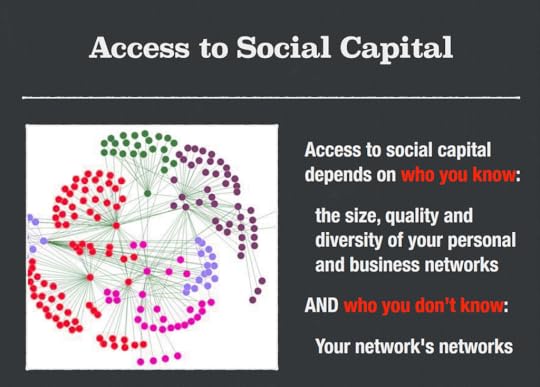
2. Part 1
https://medium.com/media/173b6e7ad02e2207f858f09b3010d582/href3. Part 2
https://medium.com/media/0f364beda43f1d169a0752ec55844d11/hrefKMWorldSpeaker Page2021 B205: Tomorrow’s KM Leaders: Education for KMers!2018 W6: KM Collaboration Clinic2017 B304: Future-Proofing: The Collaborator’s Toolkit2017W6: Designing Collaboration for SuccessW17: Creative Techniques for Facilitating Change2016 W22: Building an Innovation Engine in Your Organization2015 W14: Critical Success Factors for KM Initiatives2014 A201: KM Enterprise Adoption: How to Make It Stick! — SlidesBooks1. Optimizing Law Firm Support Functions

Table of Contents
Chapter 1: The challenge to optimize (includes Knowledge sharing and collaboration)Chapter 2: Specific optimization opportunities (includes Optimizing the library function)Chapter 3: Optimization requires strategyChapter 4: Leadership and optimizationChapter 5: Optimize through collaboration (includes Silos, Collaboration, Case study: Collaborate to reposition the firm in the market, Collaborate through a supporting role, Case study: Collaborate to create an engine for innovation, Collaboration in the C-suite)Chapter 6: Optimize by changing the game (includes Change the game with better training, Case study: Client-facing learning and development, Change the game with smarter technology)2. Book chapter in Smarter Innovation: Using Interactive Processes to Drive Better Business Results edited by Katrina Pugh
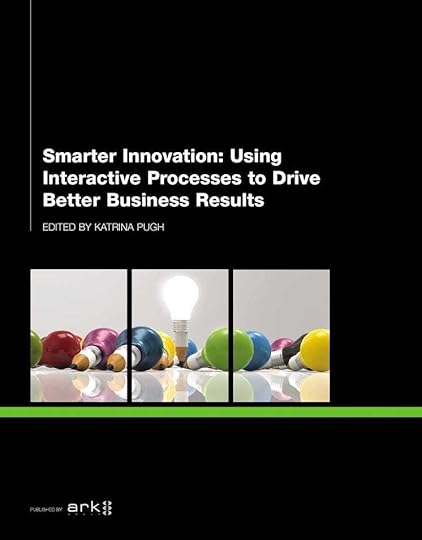 Chapter 7: Broadli: Drinking my own champagneHow to find helpHow to connectSocial capital and reciprocityBroadliCreate a network of generosity[image error]
Chapter 7: Broadli: Drinking my own champagneHow to find helpHow to connectSocial capital and reciprocityBroadliCreate a network of generosity[image error]
Knowledge Management Thought Leader 61: David Bennet
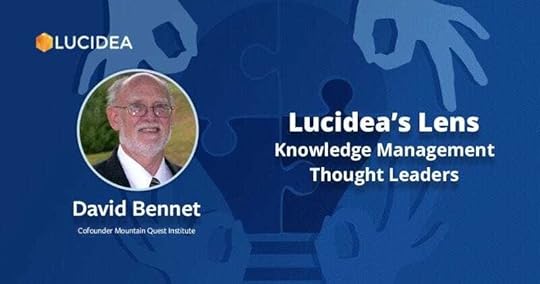
After the first 60 posts in this series featured women who are thought leaders in knowledge management, the next 60 will be about men. This is the first one in the second half of the series.
David Bennet is the cofounder, with his wife Alex, of the Mountain Quest Institute. MQI is a center focused on achieving growth and understanding through questions about knowledge, consciousness, and meaning. He and Alex co-wrote many books, book chapters, and articles.
David was CEO, Chairman of Board, and CKO of Dynamic Systems, Inc. from 1990 to 2002. He led and managed this professional services firm. David was an advisor to senior leaders in government and industry in areas of strategic planning, decision-making, knowledge management, organizational learning, acquisition reform, enterprise alignment, integrated product teams, and integrated product and process development. He holds six degrees: BA, BS, MS, MLA, MA, and PhD.
For more on David and Alex Bennet, see Profiles in Knowledge.
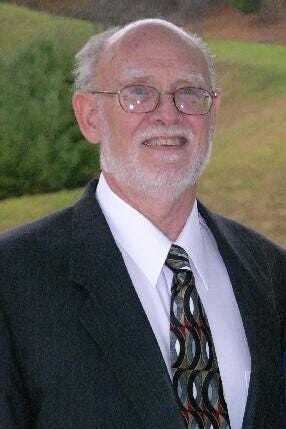 Selected Books
Selected Books

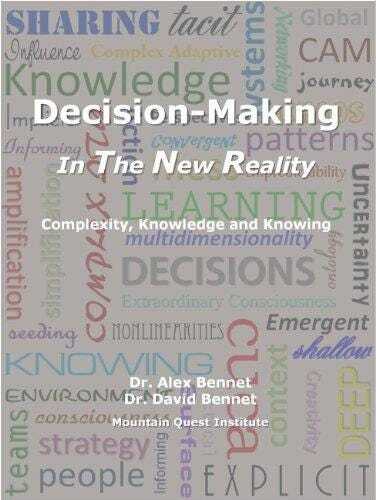 The fallacy of knowledge reuse: Building sustainable knowledge (with Alex Bennet)
The fallacy of knowledge reuse: Building sustainable knowledge (with Alex Bennet)Differentiating Knowledge
Embracing Stonier’s description of information as a basic property of the Universe — as fundamental as matter and energy — we take the amount of information to be a measure of the degree of organization expressed by any nonrandom pattern or set of patterns. The order of a system is a reflection of the information content of the system. Data (a form of information) would then be simple patterns, and while data and information would both be patterns, they would have no meaning until some organism recognized and interpreted the patterns. Thus, knowledge exists in the human brain in the form of stored or expressed neuronal patterns that may be activated and reflected upon through conscious thought. This is a high-level description of the creation of knowledge that is consistent with the neuronal operation of the brain and is applicable in varying degrees to all living organisms. From this process neuronal patterns are created that may represent understanding, meaning and the capacity to anticipate (to various degrees) the results of potential actions. Thus, it is not just information that defines knowledge, but the relationships or associations (in space and time) among that information. Through this process of associating (or complexing), the mind is continuously growing, restructuring and creating increased organization (information).
Taking a functional approach, our definition of knowledge then becomes knowledge is the capacity (potential or actual) to take effective action in varied and uncertain situations. Knowledge consists of comprehension, understanding, insights, meaning and the ability to anticipate the effect of our actions. Knowledge is neither true nor false and its value is difficult to measure other than by the results of its actions. Hence, good knowledge would have a high probability (P=.9) of producing the desired (anticipated) outcome, and relatively poor knowledge would have a low probability (P=.1) of producing the expected result. It should also be understood that desired outcomes cannot usually be described with high precision. Rather, there is likely to be a cone of acceptable outcomes that have different measures of goodness (see Figure 1). Of course, any attempt to measure the value of specific knowledge may be quite difficult due to its dependency on situational context.
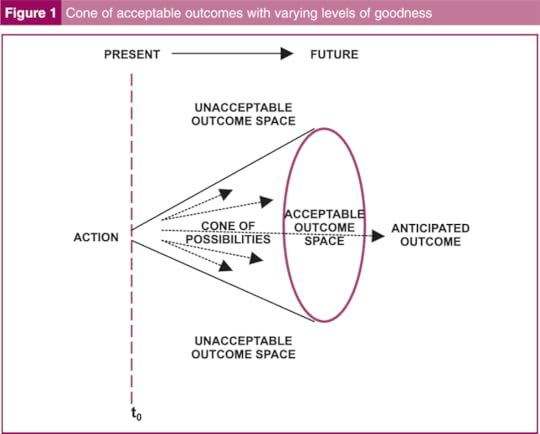
This definition of knowledge highlights knowledge as a creation of the human mind. The term knowledge is often used in organizations, popular literature, and technology solutions to mean the same thing as “information.” Recognizing that knowledge is the result of associative patterning in the brain, we choose to consider knowledge as comprised of two parts: Knowledge (Informing) and Knowledge (Proceeding). This builds on the distinction made by Gilbert Ryle between “knowing that” and “knowing how.”
Knowledge (Informing), or KnI, is the information (or content) part of knowledge. While this information part of knowledge is still generically information (organized patterns), it is special because of its structure and relationships with other information. KnI consists of information that represents insights, meaning, understanding, expectations, theories and principles that support or lead to effective action. When viewed separately this is information that may lead to effective action. However, it is considered knowledge when it is used as part of the knowledge process. Note that when “knowledge” is described and stored in a database or book, only the information part of that knowledge is stored, often considered as knowledge artifacts.
Knowledge (Proceeding), KnP, represents the process and action part of knowledge. KnP is the process of selecting and associating and applying the relevant information (KnI) from which specific actions can be identified and implemented, that is, actions that result in some level of effective outcome. There is considerable precedence for considering knowledge as a process versus an outcome. As Kolb (1983) forwards in his theory of experiential learning, knowledge retrieval, creation and application requires
engaging knowledge as a process, not a product. The process our minds use to find, create, and semantically mix the information needed to take effective action is often unconscious and difficult to communicate to someone else. The more complex a situation, the more difficult it is to find a solution, and the larger the role played by tacit knowledge in our unconscious mind.
Tacit knowledge (Knt) is the descriptive term for those connections among thoughts (neuronal patterns) that cannot be put into words. It is a knowing of what decision to make or how to do something that cannot be clearly voiced in a manner such that another person could extract and re-create that knowledge. An individual may or may not know they have tacit knowledge in relationship to something or someone. But even when you know you have this knowledge you are unable to put it into words or visuals that can convey it. To “convey” is to cause something to be known or understood or, in this usage, to transfer information in a manner such that the receiver is able to re-create the intended knowledge. In contrast, explicit knowledge (Kne) is the process of calling up information (patterns) and processes (patterns in time) from memory that can be described accurately in words and/or visuals (representations) such that another person can comprehend and re-create that knowledge. This has historically been called
declarative knowledge. We use the term implicit knowledge (Kni) to refer to knowledge stored in memory of which the individual is not immediately aware. While this knowledge is not accessible on demand, it may be pulled up when triggered (associated). In other words, implicit knowledge is knowledge that the individual does not know they have but is self-discoverable! Implicit represents a mobile spectrum between explicit and tacit.
There are four aspects of tacit knowledge: embodied, intuitive, affective, and spiritual. Embodied tacit knowledge (both kinesthetic and sensory) is knowledge represented in material form stored within the
body. Intuitive tacit knowledge is a sense of knowing based on life experiences, or as Antonio Damasio put it, “the mysterious mechanism by which we arrive at the solution of a problem without reasoning toward it.” Affective tacit knowledge represents feelings that are not expressed — perhaps not even recognized. Spiritual tacit knowledge is a form of higher guidance with unknown origin, providing a transcendent frame of reference that puts things in relationship to a larger perspective while promoting self-knowledge and learning.
Sustainable knowledge is considered as knowledge that is robust enough to handle some level of variability within its domain of action and can be dynamically modulated to handle large-scale changes, uncertainties or increasing complexities within that domain.
The Partnership Between Organizational Learning and Knowledge Management (with Alex Bennet)Learning and Communities of Practice
Communities of practice accelerate learning. The practice of COPs denotes a group with the same work focus, and therefore a group that has much in common in their everyday work life, including a common language. The community part of COPs denotes a group that has a relationship built on trust and a focus on the open sharing of ideas and best practices. In COPs the creating, learning, sharing, and using of knowledge are almost indivisible. John Seely Brown and Paul Duguid explained this phenomenon: “… talk without the work, communication without practice is if not unintelligible, at least unusable. Become a member of a community, engage in its practices, and you can acquire and make use of its knowledge and information. Remain an outsider, and these will remain indigestible.”
Etienne Wenger, a thought leader in communities of practice and formerly of the Institute for Research on Learning, found that group was important to both what people learn and how they learn. Within the group setting of claims processors, Wenger discovered that knowledge, traveling on the back of practice, was readily shared. This same pattern was found from shop floors to professional fields, where scientists, doctors, architects, or lawyers, after years of classroom training, learn their craft with professional mentors. Brown and Duguid: “Here, they form learning communities capable of generating, sharing, and deploying highly esoteric knowledge.”
Communities can facilitate both single-loop and double-loop learning. Single loop learning occurs when problems are solved by changing actions or strategies for achieving a desired result without changing the underlying theory or assumptions about those actions. Focusing on a particular field, communities provide a thought test bed for creating and sharing better ways of taking actions, developing new processes, tools and methods, and the application of new management ideas. This is single-loop learning.
But the open exchange of ideas and interactions among members of the community may challenge the basic theory and belief about how the system works. In other words, when problems arise and never seem to be solved, the underlying theory of how the system works may be wrong. Or when the environment changes, the system must change to continue to meet its responsibilities. When this occurs, an entirely new understanding of the system’s structure and what makes it behave the way it does must be reviewed and a new theory developed. This is double-loop learning. It is the most difficult of all because it requires groups of people to change their understanding of their theory of success, to break through their defensive routines to accept and believe that a new theory of action is right and will work.
This is where communities have an advantage. Communities encourage the exchange of ideas, assumptions, and theories that open their members to new ways of seeing situations. The continuous, rapid feedback system of a community provides the opportunity to tie discussions and dialogues to decision results, generating new ways of understanding the system. Within the trusting framework of communities, individuals can observe other’s results and rethink their assumptions and theories.
The value of learning in general, and double-loop learning in particular, will be to speed up the acceptance and application of new ideas, techniques, methods and tools that provide themselves in the workplace. Of equal importance is the full acceptance of new ways of doing business that change roles and relationships among organizations and individuals. Relationships among manager-employee, colleague-colleague, community-community members, government-industry, headquarters-field activities, buyers-users will all change in one form or another. How effective these changes will be depends on the beliefs and actions of the individuals in each area. Learning and change are the primary forces for success because they are absolutely essential for adaptation, experimentation, and innovation. In today’s world, every decade and every year we find new technologies, new rules and new environments which demand new perspectives, new insights and new actions.
From stories to strategy: Putting organizational learning to work (with Alex Bennet)Stories in Support of Strategy Creation and Execution
Because stories can be generated by individuals in real time and under local conditions, they naturally reflect the culture, language, and feelings of the troops. In other words, internally generated stories are most likely to resonate with the people directly involved in strategy creation and execution. This resonance gives stories a powerful role in supporting and managing strategy execution. In addition to resonance, it is important to recognize that the levels of meaning introduced in the previous paragraph can be communicated by carefully selected stories. These deeper levels can be very effective in influencing cultures and sharing understanding throughout a targeted group or environment. Their power lies in the fact that the listener is the one who “discovers” the underlying meaning in the story and, because of this discovery, has ownership in it. This ownership moves the “meaning of the story” (perhaps a core value) into the belief system of the listener where if repeated enough it will become a habit of the mind and therefore a habit of action. Through this process stories become powerful vehicles for communicating and transferring tacit knowledge. They are not just transmitters of information but may also move and inculcate complex beliefs, ideas and even processes within individuals throughout the organization.
Where a strategic goal has been identified and the strategy selected, the question becomes: what role can stories play in the strategy? Here the stories themselves would be selected, designed and implemented to ensure the support and acceleration of the desired strategy. Some examples of the ways stories can support strategy creation and execution are:
Like scenario planning, stories of past successes can be used to help an organization develop the capacity to lay out paths into the future, based upon what is known now and what is anticipated.Stories can be used to guide actions during strategy implementation and to explain the purposes and objectives of a given strategy.Stories can be used to provide a connectedness of choices during strategy execution, thereby fostering coherence among personnel.Stories can foster innovative thinking during strategy execution by suggesting new ways of looking at issues or solving problems. As David Jonassen and Julián Hernández-Serrano concluded, “Stories can function as a substitute for direct experience, which novice problem-solvers do not possess.”Stories generated from the execution of strategy can be made available through After Action Reviews or action learning teams and can serve as inputs to communities of practice, communities of interest, training materials and knowledge libraries.As key decision points arise during strategy execution, detailed decision stories may be created that provide decision learning examples and case studies for training purposes. Since a portion of decision-making is intuitive and non-factual, these stories may represent a way to communicate the intuitive aspects. Stories can do this by immediately transferring insights that are difficult to explain in everyday language. In all but the simplest of situations, decision-making requires not only facts and information but also experience, intuition and judgment. The capacity to make a good decision often lies in the unconscious mind as relevant patterns of knowledge that may come forth when needed. As stated earlier, good stories operate at this subconscious level and can be very effective in supporting specific areas of decision-making.
It is in the stories of individual experiences that tacit knowledge, so critical to judgment and decision-making, can be brought out into the sunlight. As situations become more complex and decision time compresses, leaders must create, nurture and rely on their tacit knowledge and its mouthpiece, intuition. To create, share and expose this tacit knowledge people can tell relevant stories about what they did, how they did it, and what they learned from the experience. These stories can take many forms from simple narratives to mythical hero’s journeys. At the same time, they can convey models, organizational paradigms, perspectives, values and beliefs.
There is an important difference between stories with underlying themes of rules, standards, checklists and efficiency and those that convey creative thinking, flexibility, and effectiveness. This difference is critical to every organization. It is not that one is good and the other bad. Rather, it is understanding when, where and how each comes into play as the organization evolves. For example, during the battle of Midway in WW II the Japanese Admiral thought he had located the American Fleet and sent all of the planes from his four aircraft carriers to attack. Unfortunately, in the heat of battle the gas cans and extra explosives were left out on decks of the carriers after the planes took off. The U.S. Fleet had already determined where the Japanese Fleet was and because of the messy decks of the Japanese carriers the Americans were able to sink three of the four ships. Discipline is life or death in some situations. On the other hand, at the start of the American Revolution, American militiamen fought 1800 British Regulars using little discipline but a lot of common sense, fighting Indian style from behind trees and in houses against the British who fought in their traditional rows. The result was 250 British killed versus 95 Americans killed, and the Americans won the day. These examples highlight the importance of both discipline and flexibility. Both sets of stories are needed; it is the relevance and context of the situation that demands leadership judgment.
The key to the effective use of stories is to ensure a close link between the specific story selected and the strategic objectives desired. As Steve Denning has found, stories are particularly useful for jump-starting or transforming organizations. Because they are easily remembered and are a natural part of communication, stories can have a rapid diffusion rate which supports strategies designed to deal with change or organizational transformation. Stories of past experiences may be guides to future actions or signposts of future disasters.
Afterword — The ICALS Consilience Framework: A Life, A Journey, A QuestFrom Alex Bennet: “In the Afterword to Unleashing the Human Mind: A Consilience Approach to Managing Self, Bob Turner and I took the opportunity to honor David Bennet. We are so glad to be able to share this work of the heart while David is still with us.”
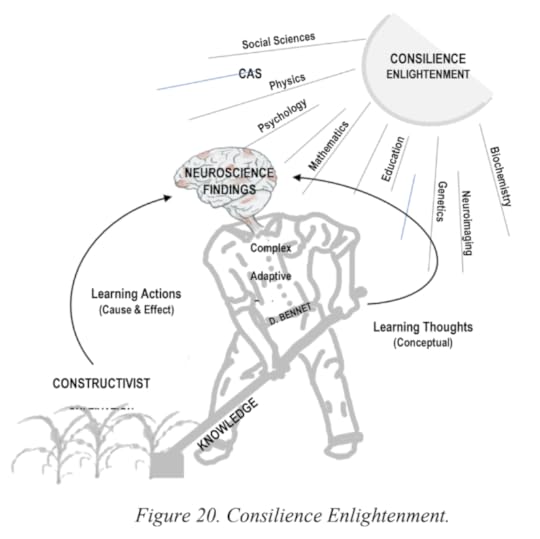 [image error]
[image error]
March 1, 2024
Knowledge Management Thought Leader 60: Cindy Gordon
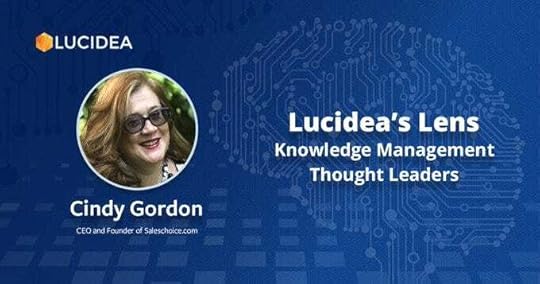
Cindy Gordon is CEO and Founder of Saleschoice.com. She is a thought leader in disruptive innovation, Software as a Service (SaaS), Artificial Intelligence (AI), and advanced analytics. Cindy is the author of 14 books on SaaS, Big Data, Collaboration, AI, and other topics.
Her specialties include machine learning, natural language processing, predictive and prescriptive analytics, and data science. In the field of artificial intelligence, she focuses on ethical AI, AI governance, and AI for business.
Background EducationUniversity of Toronto, Rotman School of Management — Doctorate, Network Complexity Science: Node Signal Detection/ Collective Intelligence Cultural Anthropology, 1996–2003University of Alberta — Master’s, Educational Administration in Information Technology, 1982–1984ExperienceSalesChoice Inc. — CEO and Founder. 2012 — PresentGeorge Brown College — AI and Ethics — Adjunct Professor, 2021 — PresentAI Directory — Co-Founder, Chairman, and Board Director, 2017–2023Helix Commerce — CEO and Founder, 2003–2012XDL Intervest — Partner, 2001–2003Accenture — Practice Partner Leader, 1998–2001Xerox CorporationGeneral Manager & Senior Director, 1998–1999Director, 1991–1998Citicorp — Assistant Vice President, 1989–1991ProfilesSalesChoiceHelixLinkedInFacebookTwitterBooks
EducationUniversity of Toronto, Rotman School of Management — Doctorate, Network Complexity Science: Node Signal Detection/ Collective Intelligence Cultural Anthropology, 1996–2003University of Alberta — Master’s, Educational Administration in Information Technology, 1982–1984ExperienceSalesChoice Inc. — CEO and Founder. 2012 — PresentGeorge Brown College — AI and Ethics — Adjunct Professor, 2021 — PresentAI Directory — Co-Founder, Chairman, and Board Director, 2017–2023Helix Commerce — CEO and Founder, 2003–2012XDL Intervest — Partner, 2001–2003Accenture — Practice Partner Leader, 1998–2001Xerox CorporationGeneral Manager & Senior Director, 1998–1999Director, 1991–1998Citicorp — Assistant Vice President, 1989–1991ProfilesSalesChoiceHelixLinkedInFacebookTwitterBooksThe AI Dilemma: A Leadership Guide to Assess Enterprise AI Maturity & Explore AI’s Impact in Your Industry with Malay A. Upadhyay

Winning at Collaboration Commerce: The Next Competitive Advantage with Hedi Collins and José Cláudio Cyrineu Terra
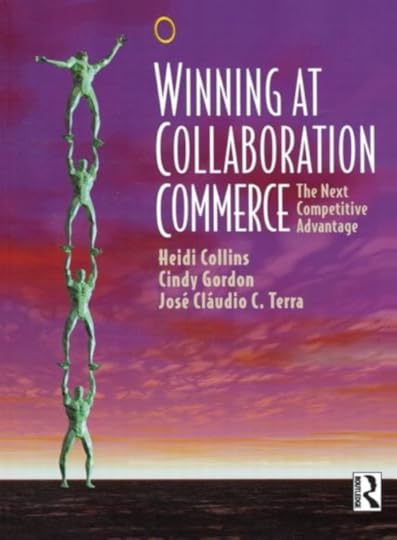
Why Buy the Cow? How the On-Demand Revolution Powers the New Knowledge Economy edited with Subrah S. Iyar
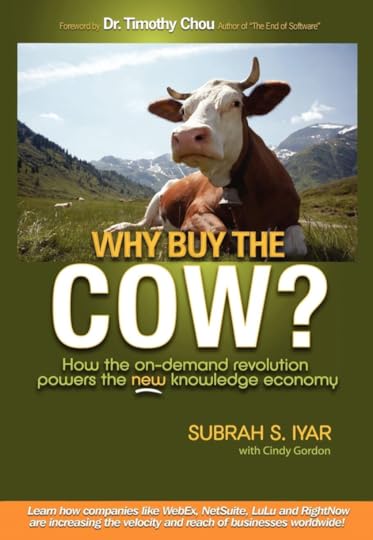
Business Goes Virtual: Realizing the Value of Collaboration, Social and Virtual Strategies with JoAnn and John Girard
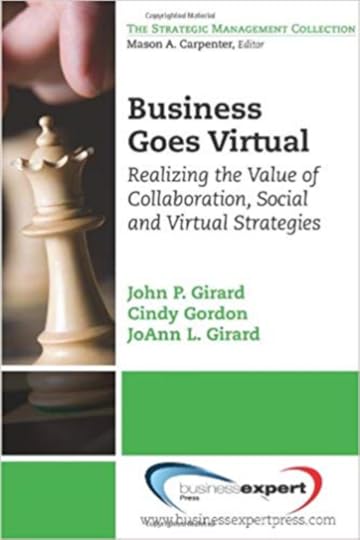
Social Roots: Why Social Innovations are Creating the Influence Economy with John Girard and Andrew Weir

Realizing the Promise of Corporate Portals: Leveraging Knowledge for Business Success with José Cláudio Cyrineu Terra
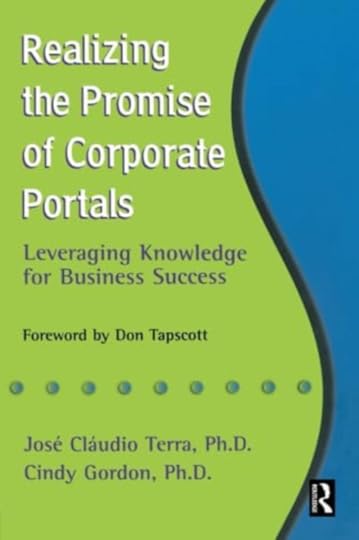
Knowledge Management: Classic and Contemporary Works edited by Daryl Morey, Mark Maybury, and Bhavani Thuraisingham — Chapter 5: Knowledge Sharing Is a Human Behavior with Ben Torrey and Bill Ives
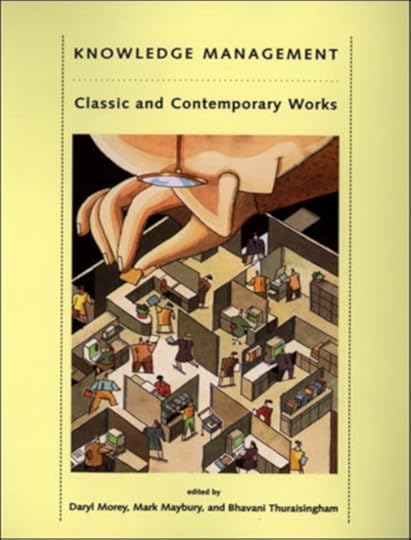 ContentSalesChoiceHelixAI DirectoryLinkedIn PostsPodcastsGood Morning BTData MindsetTech Talks — “30% of employees wake up sad or angry.”VideosThe Ethics of AIhttps://medium.com/media/47a9a9e7f4fbbae351bb40ddb0075cf9/hrefElevating Sales With AIhttps://medium.com/media/464a7614b210ca9916b2b40c80aaeb12/hrefOwning the AI Algorithm to Unlock Trillionshttps://medium.com/media/6c15a01873668dd8a3b3300db1a2eebf/hrefPresentationsHow to Sell to EnterpriseSocial Media for the Enterprise
ContentSalesChoiceHelixAI DirectoryLinkedIn PostsPodcastsGood Morning BTData MindsetTech Talks — “30% of employees wake up sad or angry.”VideosThe Ethics of AIhttps://medium.com/media/47a9a9e7f4fbbae351bb40ddb0075cf9/hrefElevating Sales With AIhttps://medium.com/media/464a7614b210ca9916b2b40c80aaeb12/hrefOwning the AI Algorithm to Unlock Trillionshttps://medium.com/media/6c15a01873668dd8a3b3300db1a2eebf/hrefPresentationsHow to Sell to EnterpriseSocial Media for the EnterpriseKMWorld
2011 C301: Business Goes Virtual — Slides2010C201: Enterprise Digital StrategyC301: Enterprise Innovations for the Future2009W6: Developing Enterprise 2.0 for Employee and Customer Engagement — SlidesA105: The Future Knowledge Workforce — Slides2008W10: Virtual World Safari: Showcasing Practical SolutionsW20: SharePoint & KMA106: Virtual Worlds & Next-Generation Social Net Experiences2007W10: Taking Advantage of Web 2.0 ApplicationsKeynote: Revolutionizing Online Engagement2006 Keynote: Innovative Enterprises: Leaders’ Visions & StoriesArticlesThe Innovation and Collaboration Blog JamKnowledge Management PostsTop 50 Knowledge Management BlogsForbesLinkedIn ArticlesSalesChoice: An AI Solution for B2B SalesKnowledge Sharing as an Enabler of Virtual Business with John and JoAnn GirardWhy is collaboration important?
Collaboration is the act of people working together to reach a common goal. It also involves getting the right information to the right people at the right time to make the right decision. This sounds so simple-but collaboration is so much more than well-informed and speedy decisions to help organizations get work done.
Collaboration is the fundamental DNA or essence in the way that people in an organization function together to achieve a mutually desired outcome. This chapter defines collaboration and provides leading practices to demonstrate the value of collaboration in supporting an organization’s growth. Collaboration, value networks, social networks, and open-source innovation (often called crowdsourcing) approaches to business virtualization are top of mind with global leaders who understand that a new world order is rapidly evolving.
This new collaborative and more connected world is more adaptive, more agile, more fluid, more virtual, and finally, more collaborative and quite frankly more refreshing, fun, and inspiring. Just look at the energy of Gen X and Y in how they approach their day-to-day work practices. This precious energy needs to be harnessed to unleash further our human potential and also prepare for the Generation Virtual growing up with 3D virtual avatars and animated worlds to make way for the entertainment social experiences overlaying all business processes. Just think of how much more enjoyable working in an SAP order entry system would be if the employees were connected to each other and be able to enjoy peer-to-peer problem solving support creating conversations in real time.
There is no question that collaborative business models are reaching deep into business model design logic and challenging our assumptions related to governance, strategy, organizational design, leadership, people practices, process, culture (core values and rituals), technology, and our performance measurement systems.
In order to understand the significance of collaboration, it is helpful to go back to the beginning. The first generation of business collaboration tools began with a focus on documents that were created and shared by individuals who used one device: primarily the personal computer. Information resided safely within the walls of the enterprise, and personal productivity over time improved. Collaboration shifted the focus from documents and personal computers to a more mobile and virtual model where people collaborated in social web-based sessions, defining the new fundamental unit of collaborative work, in which groups of individuals interact across company and geographic boundaries.
The goal of virtual collaboration is to create the experience of presence with the absence of being face to face, hence creating a virtualized experience. This new collaborative experience helps us cope with information overload by delivering only what we need, just when we need it. We can find experts in an instant and participate in social online conversation, using diverse social and virtual toolkits from a variety of devices, like blogs, videos, wikis, social networks, team spaces, and conferences. Fortunately, due to advanced security and policy management, we can also engage diverse stakeholders, including partners, customers, and suppliers in our one-to-many communications. Collaborative conversations on the web form a new fundamental unit of collaborative work. The goal of a virtual collaborative conversation is to create the effect of presence within the absence of face-to-face (live) connections.
As suggested in Winning at Collaboration Commerce: The Next Competitive Advantage, it was very clear that collaboration is a participatory process leveraging social capital know-how that is also built upon strong cultural value foundations based on trust, reciprocity, networks, and risk-taking models. With global market dynamics stressing customer solutions that are real-time, agile, adaptive, and Internet accessible, the customer experience value chain is under a collaborative design rethink. Already attracting, developing and retaining Gen X and Gen Y talent pools is a challenge; creating virtual businesses is a key success factor to drive a sustaining growth future.
For the first time in the history of academics and business leaders at the top of their game, we are seeing more aligned wisdom that collaboration is a fundamentally higher order of leading, thinking, and behaving; it is challenging old rigid views as we emerge to a more human organizational experience leveraging networked, virtual, social collaboration, and modernized design experiences that connect the mind, heart, and spirit to achieve higher productivity performance levels.
Effective collaboration can improve many aspects of an organization’s performance, whether it is an increase in innovation capacity, increased time to market by streamlining the product-development process, taking time out of the sales cycle, or reducing customer wait time in call centers, using instant messaging (IM) to find the person who can respond to an opportunity immediately, or avoiding travel costs due to unified and ubiquitous telepresence capabilities, there is sufficient evidence that hardwiring your organization to achieve collaboration and virtualization practices is critical for long-term growth and survivability.
When you implement more efficient processes, achieve faster time to market, and reduce cycle times, you extract more value from your collaboration investment. If you can identify opportunities to shorten the time needed to make critical decisions, there is no better place to invest than in smarter, more collaborative, and more virtualized capabilities.
These good points all aside, the practical reality is that many executives still say, we get that this collaboration stuff is important, but how do we infuse it in our day-to-day management and operational practices, so it really sticks? In other words, where is the evidence that investing in collaborative practices and next generation technology solutions really makes a difference to the bottom line?
Perhaps the measure of success is recognizing that we are human beings, and once our basic needs for safety and shelter are satisfied, humans thrive on having a sense of belonging. They develop a sense of connectedness and knowing their ideas are valued and respected. They are motivated to achieve higher levels of productivity, and hence they are more open to collaborating and working together to develop and deliver stronger products and services to their customers or stakeholders.
Knowledge Management and Value of Social TechnologiesKnowledge Management is a management discipline that continues to evolve in theory and practice.
In simple terms, KM is best defined as the body of understanding and skills that is mentally constructed by people. Knowledge is increased through interaction with information (typically generated from other people).
There are typically three major types of knowledge:
Embodied or tacit or implicit knowledge: Undocumented information in human beings such as intuition, empathy, experience know-how, mental models, artifacts, values, and norms that enables us to make decisions.Represented knowledge, often called explicit or codified, or tangible knowledge: This is knowledge that is mostly contained in data, and documented information that is rightly the basis for such decision-making.Embedded knowledge: is the knowledge that exists in processes, products, rules and procedures — also called explicit, or codified or tangible knowledge.While the term knowledge management is popular, there are many interpretations and more importantly — many misunderstandings of what KM means. KM is not the mechanical organization of knowledge; nor is KM solely about content. KM is a system and a process, and not just about content. It is also about culture as culture creates the context for knowledge to effectively be cultivated and to flow effectively.
I look at KM as a multi-disciplinary approach to achieving an organization’s objectives, by making the best use of knowledge — it focuses on processes such as acquiring, creating, and sharing knowledge, and the cultural and technical foundations that support them. The aim of KM is to align knowledge processes with organizational objectives.
The reasons why organizations commit to KM include:
Improve the quality of available knowledge within the enterprise and share it across operating unitsImprove responses to competitive forcesReduce or control costsAccelerate the rates of innovation within an enterpriseReduce the loss of intellectual assets caused by turnover in employeesThe value that social technologies provide to KM programs is that they create an enabling collaborating infrastructure to help people, communities and social networks to adaptively generate knowledge in real time.
These adaptive free-flowing toolkits allow people to self-declare their interests and for the natural organic process of interest swarming to take place. In other words, people gravitate to the topics, themes, discussions of most interest to them, as well as being able to search for profiles, or interest areas that specifically map to an individuals’ interest. Social technologies provide for a more open, transparent, and organic form of communication which accelerates organizations’ ability to support and further achieve the KM organizational goals summarized above.
Sometimes I hear people say knowledge management is dead — which only reaffirms how misinformed people are in understanding the science of knowledge diffusion theory, which is rooted in cultural anthropology and deeply looks at how knowledge is formed and flows.
Knowledge is what allows us to innovate and grow, and without its capabilities and generative power — we would not evolve as a human species. Social technologies are simply toolkits that accelerate our ability to share knowledge and create communities of interest relevant to our goals, and needs.
Perspectives on Trust Making for Leadership GrowthCharles Darwin had a good perspective on life when he wrote “ It is not the strongest of the species that survive, nor the most intelligent, but the one most responsive to change.”
However, what he failed to put in perspective is that to adapt to change and build this type of resilience capability requires organizations to face new and unexpected challenges by developing skills in the art of trust making.
In today’s market, the economic realities to many of our clients, friends, and colleagues seem daunting. What we do know is that organizations will always have a choice.
They can either respond proactively and efficiently or choose to remain in the status quo mode which is often characterized by a downward spiral. Doing the same with less is usually a pathway that leads to mediocrity and certainly does not lead to innovation success.
What motivates people to change? What motivates leaders to lead and mentor? Why is trust making often so elusive? Why are business graduates not trained in trust and creating a culture of openness, transparency and candor?
We cannot expect people to follow in difficult times, unless leaders learn how to communicate authentically and honestly, and create organizations where this is the norm. I recently had an experience in my own firm, where a trusted partnering relationship was brought into our core operation, leveraged our credentials, and good will and relationships to secure business independently. The stress that dishonest people can drive into a business’s operations was very evident, as the disappointment created such a sense of disillusionment as we experienced what dishonesty and lack of integrity emits into the human psyche — especially when core values are impacted.
What do you do in a situation like this? In our case, it was simple, the core values have to take precedence when ethical behaviors are in question and rapidly discontinue the relationship.
Unfortunately, the yardstick that too often measures the performance of CEOs is their ability to create wealth and shareholder value for their investors.
However, the realities of short-term thinking in the latest rounds of busts have many business strategists and thought leaders — advising there is a better way.
Our belief at Helix and our research in creating stronger collaboration centric cultures is that to develop stronger corporate cultures where trust is a core value, means that leaders need to start practicing authentically trust making and trust sensing behaviors.
Rule One — Simply always tell the truth. Don’t develop weak behaviors by falling into the trap of telling people what they want to hear. Treat your colleagues as adults. Speaking straight talk is a key leadership foundation for developing trust in an organization’s culture. Soon others will follow. People appreciate knowing they can trust their superiors and know that they have their interests genuinely at heart.Rule Two — Encourage others to speak honestly, and openly, irrespective of how difficult it is to speak the truth. It is often very difficult for others lower in the hierarchy to share bad news when they know their superiors want to hear good news. It is important as a leader to create the conditions for people to know they are respected for having courage and know that taking risks are encouraged and supported.Rule Three — Reward the change agents that are contrarians or challenge the status quo. Organizations do not innovate successfully if they fail to seed change agents that are catalysts for new ways of working and thinking. Ensure they are positioned so they can enable change vs spin their wheels and not be listened to — and leave disillusioned. Remember to recognize them in small ways — the simple thank-you’s one can never say enough of especially in difficult times.Rule Four — Diversify knowledge sources. It is important to reach into the organizational structure at all levels to hear firsthand what is on the minds of employees, customers, suppliers, and competitors so your own leadership understanding has the rich context. It is also important that people believe they are being listened to and heard, these footprints will be shared and also enhance your leadership credibility. Creating a culture of trust requires developing a strong listening culture and appreciated diversity in its richest context: gender, culture, thoughts, etc.Rule Five — Acknowledge mistakes and move on. Don’t bury mistakes, use them as learning opportunities. This gives everyone permission to do the same and sends out signals that risk taking is really accepted. Clearly if mistakes are risks to the business and impact core values the actions taken need to be carefully thought through and advisors and peers /superiors/mentors can play an important reflection opportunity to ensure a culture fostering learning is sustainable.Rule Six — Develop a culture where collaboration and knowledge sharing is free flowing. Most organizations like to hoard information as information and knowledge means power. Work hard to develop open environments to source rich knowledge, at the same time protecting the knowledge that requires more risk management. Financial reporting requires a stricter risk management process than, for example, access to project plans from diverse projects to develop stronger project management skills.Rule Seven — Develop clear value statements for transparency, trust, collaboration, and authenticity. Many executives use these words freely, but few have explicit leadership behaviors and learning programs to support employees. Hire people because they create a culture of trust making behaviors and are known for their honesty, integrity, and candor.Rule eight — Weed out the behaviors irrespective of level that are not aligned to the core values. People do not suffer fools gladly — they can easily spot inconsistent leadership behaviors and when business judgements are clearly at risk, having a truthful conversation and making tough decisions that demonstrate you are serious about respecting and living your organization’s core values will go a long way to building a stronger culture of trust making strength.In my experience in business, it takes time to build trust and develop consistent leadership behaviors that support the continual flow of intelligence that enables true collaboration.
Perhaps the only messenger one should ever shoot is the one that arrived too late to tell the truth.
[image error]February 23, 2024
Knowledge Management Thought Leader 59: Nancy White
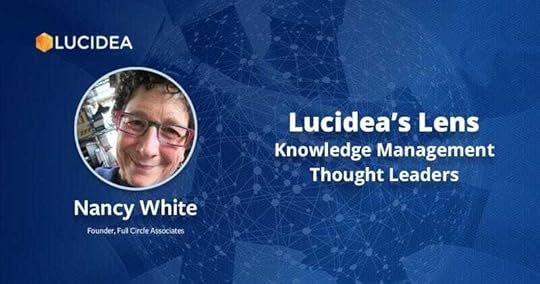
Nancy White is the founder of Full Circle Associates, her consulting practice that includes an extensive network of professionals. She is a frequent contributor and a past core group member of KM4Dev, a global networked community of international development practitioners interested in knowledge management and knowledge sharing issues and approaches, who seek to share ideas and experiences in this domain.
Nancy is a leading thinker, writer, and practitioner of online facilitation (group facilitation for distributed environments). She supports distributed learning, teams, and communities of practice, where technology is just the tip of the iceberg. She believes that organizational capacity and strong processes are the links to success.
Nancy supports communications for NGOs, NPOs and community organizations, thinking in, out, around, and beside the box. She offers fresh ideas and practical plans for implementation.
Her specialties include online interaction strategic planning, design, execution, online facilitation, training, NPO/NGO knowledge sharing/management, strategic communications framing, issue communications, project management, and chocolate tasting.
Background EducationDuke University — BA, Botany, 1980ExperienceFounder, Full Circle Associates, since 1997Chief Operating Officer, Bullseye Internet News Service USA, 1996–1997Director of Programs and Communications, March of Dimes — Washington State, 1989–1996KIRO Radio and Television, Executive Administrator — Public Affairs and other positions, 1981–1989ProfilesSite Profileabout.meLinkedInFacebookTwitterFlickrKM4DevProfiles in KnowledgeBooksAmazon Author Page
EducationDuke University — BA, Botany, 1980ExperienceFounder, Full Circle Associates, since 1997Chief Operating Officer, Bullseye Internet News Service USA, 1996–1997Director of Programs and Communications, March of Dimes — Washington State, 1989–1996KIRO Radio and Television, Executive Administrator — Public Affairs and other positions, 1981–1989ProfilesSite Profileabout.meLinkedInFacebookTwitterFlickrKM4DevProfiles in KnowledgeBooksAmazon Author PageDigital Habitats: Stewarding Technology for Communities with Etienne Wenger and John D. Smith

The Change Handbook: Group Methods for Shaping the Future edited by Peggy Holman, Tom Devane, and Steven Cady — Chapter 59: Online Environments that Support Change (with Gabriel Shirley)
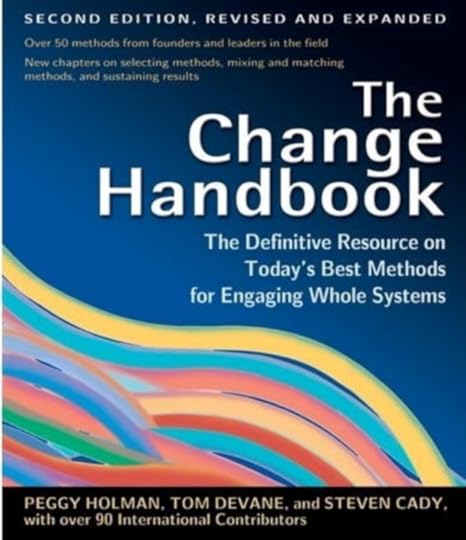
Encyclopedia of Virtual Communities and Technologies edited by Subhasish Dasgupta — Online Group Facilitation Skills (page 354)
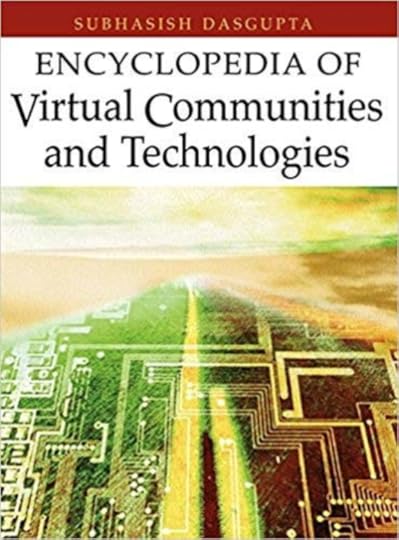
Knowledge Networks: Innovation through Communities of Practice edited by Paul Hildreth and Chris Kimble — Chapter 23: Click, Connect and Coalesce for NGOs: Exploring the Intersection Between Online Networks, CoPs, and Events
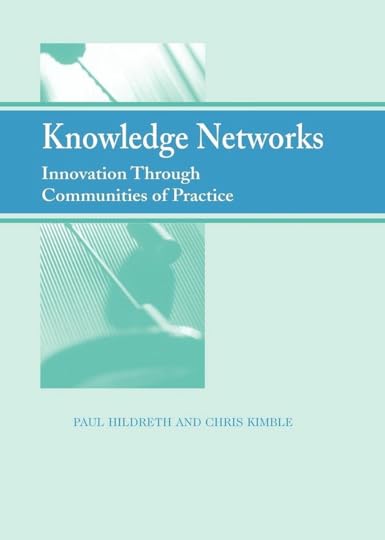
OTiS Online Tutoring E-book edited by Carol A. Higgison — Chapter 6: Culture and Ethics: Facilitating Online Learning (with Michel Labour, Charles Juwah, and Sarah Tolley)
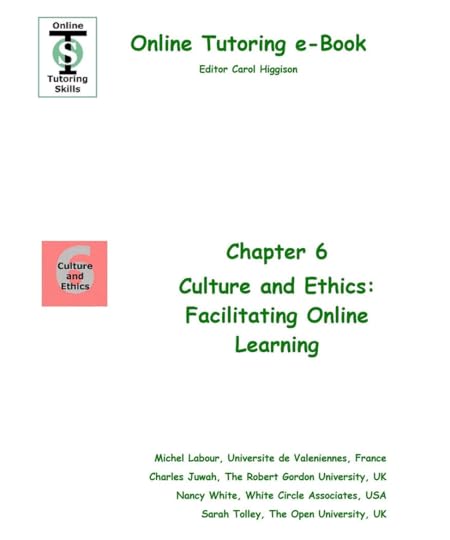 VideosMatt MooreYouTubeYouTube ChannelGroup Facilitation Vs. Network FacilitationSuccessful Distributed TeamsCITEP UBAKM Impact ChallengeLoomioVimeoImpressions from KM4DevAn Intro to TwitterGraphic Recording 101ContentSite and BlogOld BlogOnline Community ToolkitVirtual Liberating Structures Community HandbookKnowledge Sharing for DevelopmentTechnology for CommunitiesSIKM Leaders Community PostsKM4Dev PostsLinkedIn PostsPodcastsCommunity Roundtable with Jim Storer and Rachel HappeSocial Speech by Rob CottinghamSlow Communities by Matt MooreBlended Facilitation — with Ed Mitchell by Matt MooreLife Online by Jon Lebkowsky and Scoop SweenyPresentationsSlideShareSIKM Leaders CommunityFebruary 2010 Rethinking Ourselves (KM People) as Technology Stewards with Etienne Wenger and John SmithSeptember 2012 Graphic FacilitationArticlesResearchGateSemantic ScholarKM4Dev Journal ArticlesLearning 3.0: collaborating for impact in large development organizations with Rachel Cardone andAldo de MoorKnowledge management for development in 2020: let your imagination fly! with Kemly Camacho, Pete Cranston, Charles Dhewa, Sarah Cummings, and Ivan KulisLittle steps to lofty goals: keys to successful community learning for civil society development with Siobhan KimmerleEditorial: Communities of Practice in development: a relic of the past or sign of the future? with Adrian Bannister, Charles Dhewa, Riff Fullan, Lucie Lamoureux, and Ewen Le BorgnePeeking behind the curtain: the realities of facilitation in development with Lucie LamoureuxEditorial: Stewarding technologies for collaboration, community building and knowledge sharing in development with Beth Kanter, Partha Sarker, Oreoluwa Somolu, Beverly Trayner, Brenda Zulu, and Lucie LamoureuxCommunities and networks in support of knowledge sharing. Part 1Communities and networks in support of knowledge sharing. Part 2Technology stewardship in the face of a crisis. An interview with Dina Mehta with Beth KanterArticles by OthersThe Passion Behind Knowledge Sharing, Online Communities and Collaboration — Interview with TallyFoxConversations around the implementation of CIAT’s internal communications strategy by Simone StaigerInterview by Lilia EfimovaInterview with ToP Network by Eunice Shankland and Sheila LeGerosInterview with Association for the Advancement of Computing in EducationCommunities of Practice (CoPs) by Darren SidnickImproving cross-disciplinary collaboration with strategy knotworking and ecocycle planning
VideosMatt MooreYouTubeYouTube ChannelGroup Facilitation Vs. Network FacilitationSuccessful Distributed TeamsCITEP UBAKM Impact ChallengeLoomioVimeoImpressions from KM4DevAn Intro to TwitterGraphic Recording 101ContentSite and BlogOld BlogOnline Community ToolkitVirtual Liberating Structures Community HandbookKnowledge Sharing for DevelopmentTechnology for CommunitiesSIKM Leaders Community PostsKM4Dev PostsLinkedIn PostsPodcastsCommunity Roundtable with Jim Storer and Rachel HappeSocial Speech by Rob CottinghamSlow Communities by Matt MooreBlended Facilitation — with Ed Mitchell by Matt MooreLife Online by Jon Lebkowsky and Scoop SweenyPresentationsSlideShareSIKM Leaders CommunityFebruary 2010 Rethinking Ourselves (KM People) as Technology Stewards with Etienne Wenger and John SmithSeptember 2012 Graphic FacilitationArticlesResearchGateSemantic ScholarKM4Dev Journal ArticlesLearning 3.0: collaborating for impact in large development organizations with Rachel Cardone andAldo de MoorKnowledge management for development in 2020: let your imagination fly! with Kemly Camacho, Pete Cranston, Charles Dhewa, Sarah Cummings, and Ivan KulisLittle steps to lofty goals: keys to successful community learning for civil society development with Siobhan KimmerleEditorial: Communities of Practice in development: a relic of the past or sign of the future? with Adrian Bannister, Charles Dhewa, Riff Fullan, Lucie Lamoureux, and Ewen Le BorgnePeeking behind the curtain: the realities of facilitation in development with Lucie LamoureuxEditorial: Stewarding technologies for collaboration, community building and knowledge sharing in development with Beth Kanter, Partha Sarker, Oreoluwa Somolu, Beverly Trayner, Brenda Zulu, and Lucie LamoureuxCommunities and networks in support of knowledge sharing. Part 1Communities and networks in support of knowledge sharing. Part 2Technology stewardship in the face of a crisis. An interview with Dina Mehta with Beth KanterArticles by OthersThe Passion Behind Knowledge Sharing, Online Communities and Collaboration — Interview with TallyFoxConversations around the implementation of CIAT’s internal communications strategy by Simone StaigerInterview by Lilia EfimovaInterview with ToP Network by Eunice Shankland and Sheila LeGerosInterview with Association for the Advancement of Computing in EducationCommunities of Practice (CoPs) by Darren SidnickImproving cross-disciplinary collaboration with strategy knotworking and ecocycle planningI have used the six knotworking questions plus ecocycle planning from Liberating Structures to make it possible for a group to look back critically, assess the current state, and prospectively generate options to move forward.
The six knotworking questions are:
What is the fundamental purpose of our work (as individual projects and as a portfolio)?What is happening around us that demands change?What are the critical uncertainties and paradoxes we must face to make progress?Where are we starting, honestly?Based on what we have discovered, what is now made possible?What are our next steps and how will we know we are making progress?From answering the six questions, a shared language evolves. Fresh ideas across portfolios of work within or across funded programs come into focus. Relationships form and deepen creating space for peers to ask for and offer specific help. Teams can more easily refer to issues across different contexts for optimization. Emergent ideas can be supported across portfolios of grant-funded projects.
What shows up repeatedly is how silos become more permeable and even networked. Two aspects of knotworking seem most useful in this context:
Action and learning entwinedExploring together generates new optionsCommunity of Practice Start Up Toolkit & WorksheetsFull Circle’s 10 Steps for New Communities
Define and clearly articulate community PURPOSE (Domain). Be clear where you want to aim in terms of depth and breadth. Ideally, do this with some (potential) community members. Be sure to consider alternatives to a community format.Determine if there are any existing communities that fill your need. Don’t replicate. It is hard to compete for limited time and attention. If there is an existing community, see if you can work with them. If no community, continue!Identify the PEOPLE (Community) who you would want to participate.Articulate and test the purpose with potential members to see if they can see the value of participating. If not, reexamine your community purpose.Analyze what initial community activities and PRACTICES you should plan for to engage people. Make sure there are some options, but not too many options. It is always wise to start simply.Pick appropriate online tools and set them up as simply as possible to start. You may want to “turn off” some features at the start and gradually add them in.Design your initial monitoring and evaluation approach. Consider focusing on the PURPOSE, PEOPLE and PRACTICE.Seed your community with your friends and network. No one likes to join an empty shell. Invite people and spread the word.Plan an engaging kickoff event and then keep going!Take time to reflect and notice what is working (do more of that), what is not working (stop that) and what can be improved. Always be learning!Why should I consider a Community of Practice?
The knowledge we want to create, share, apply sits with the individuals, rather than codified into books, manuals, or other artifacts. The practice is complicated or complex enough that it can’t be supported with just “best practices.”The domain is uncertain, changing or emerging, so we need to regularly check in with each other as practitioners.The practitioners need the social support of other practitioners in addition to the domain content. This may mean helping people identify as professional practitioners, grow their skills and confidence, or grow by becoming a leader in their field.We are passionate about learning and advancing our field. We can’t get enough of learning!CoPs bring unique value because:
They tap into member knowledge and experience.They can blend with projects and teams or stand alone.They can fly under the radar” or be part of a more formal set up.They offer value in informality, voluntary participation and relationship that can go far beyond the content or domain.[image error]February 16, 2024
Knowledge Management Thought Leader 58: Beverly Wenger-Trayner

Beverly Wenger-Trayner is a social learning consultant who works with organizations to develop strategies and practices for cultivating communities, networks, and other forms of social learning. Her expertise encompasses both the design of learning architectures and the facilitation of processes, activities, and use of new technologies.
Bev’s specialties include dealing with complex issues (part of the social discipline of learning); designing and facilitating events that integrate online and offline; integrating social media in the learning strategies of communities of practice; working and designing for distributed teams; and designing for conversations and dialogue that cross time, space, and cultures.
She has substantial experience in coaching conveners and in supporting multilingual groups across cultures, time zones, and geographic locations. She has published chapters and articles about learning in internationally distributed communities and co-authored multiple books. Bev feels most at home working with people in international settings and complex landscapes, especially when it includes the integration of new technologies and social media in innovative ways.
Bev supports government agencies or organizations who are setting up learning environments or communities of practice in distributed communities. This support can come on three levels: developing strategic learning strategies, training, and coaching of community leaders, and facilitation of events. Monitoring the value of the communities is often a part of her work.
People have called her a learning architect, a social artist and a technology steward. Bev often facilitates community meetings for people who want quality conversations and dialogue. She has been the creative designer of a platform that combines social networking, workspaces and a library.
She sees herself as an action researcher with aspirations for doing more auto-ethnographic writing. In the 70s, Bev was a political and social activist, passionate about connecting people globally and raising awareness of global issues of justice in local contexts. She has lived in four countries: Kenya, UK, Portugal, and the USA. As a result, Bev developed a hybrid socio-techno-political worldview that spans continents. She identifies with people whose life has been one of crossing boundaries, from the very tiny to the very big.
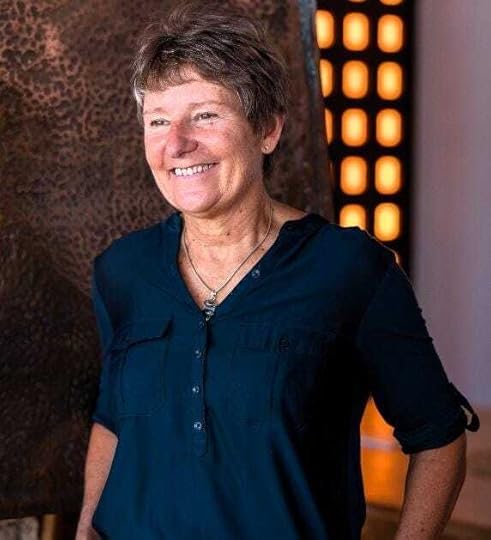 EducationUniversity of BathUniversidade de AveiroUniversity of BrightonUniversity of LondonProfilesAboutLinkedInFacebookTwitterProfiles in KnowledgeBooks
EducationUniversity of BathUniversidade de AveiroUniversity of BrightonUniversity of LondonProfilesAboutLinkedInFacebookTwitterProfiles in KnowledgeBooksCommunities of Practice Within and Across Organizations: A Guidebook with Etienne Wenger-Trayner, Phil Reid, and Claude Bruderlein — This new guidebook captures the practical experience of the authors with communities of practice. It includes chapters on setting the organizational context, cultivating communities of practice, facilitating meetings and social learning activities, using technology, and articulating the value created.

Systems Convening: A crucial form of leadership for the 21st century with Etienne Wenger-Trayner — This short book showcases systems convening work in different contexts around the world. It describes the role and practice of people who enable learning across boundaries and connect people across silos. Their work often goes unnoticed, but they have a vital role to play in addressing 21st-century challenges.
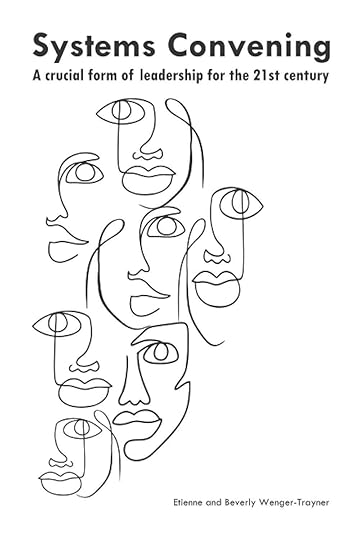
Learning to Make a Difference: Value Creation in Social Learning Spaces with Etienne Wenger-Trayner — This book offers a framework for learning to have an impact: engaging with others, monitoring the value this creates, and making adjustments on-the-go. It is written for researchers, educators, and leaders in business, government, healthcare, and international development with or without prior knowledge of learning theory.
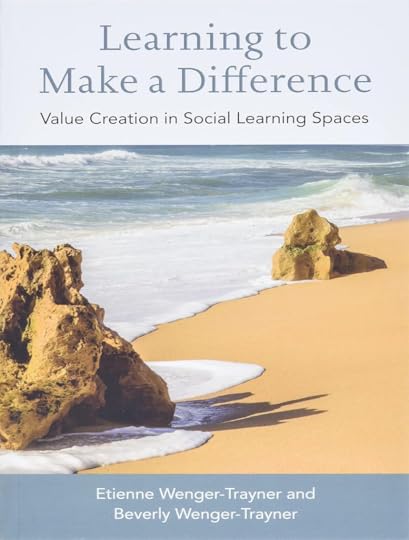
Designing for change: Using social learning to understand organizational transformation with Etienne Wenger-Trayner — This book was commissioned by the University Innovation Fellows Program to tell their story using our value-creation framework. The Fellows are university students from campuses around the world. The program coaches them to use their entrepreneurial spirit and skills to drive changes on their campus that are designed to promote innovation and entrepreneurialism. The stories of these students captured in this book are amazing.
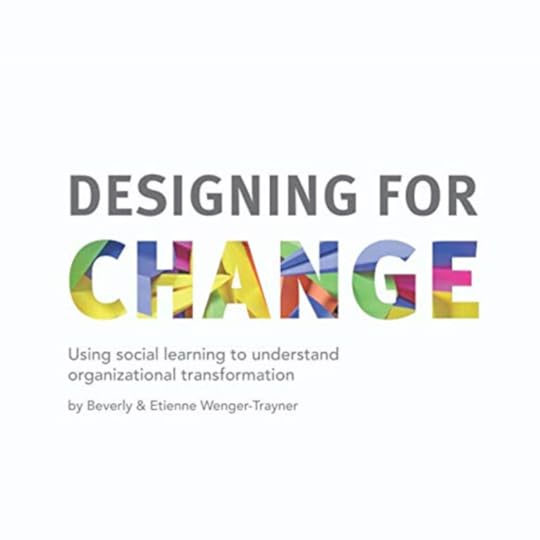
Learning in Landscapes of Practice: Boundaries, identity, and knowledgeability in practice-based learning edited with Etienne Wenger-Trayner, Mark Fenton-O’Creevy, Steven Hutchinson, and Chris Kubiak — This book is of particular relevance to people concerned with the design of professional or vocational learning. It will also be a valuable resource for students engaged in higher education courses with work-based elements.
 VideosVideosAbout BevDeep Dive: Social Learning at LMN ArchitectsCrCET: Systems Convening in Complex Landscapes of PracticeYouTube ChannelYouTube SearchSocial learning — a frameworkInterviewContentSiteResourcesFAQsBlogPublicationsLinkedIn PostsPodcastsPresentationsSlideShareSIKM Leaders Community — October 2018: Social Learning Leadership: A ConversationArticlesGoogle ScholarResearchGateSemantic ScholarSpringerRoutledge
VideosVideosAbout BevDeep Dive: Social Learning at LMN ArchitectsCrCET: Systems Convening in Complex Landscapes of PracticeYouTube ChannelYouTube SearchSocial learning — a frameworkInterviewContentSiteResourcesFAQsBlogPublicationsLinkedIn PostsPodcastsPresentationsSlideShareSIKM Leaders Community — October 2018: Social Learning Leadership: A ConversationArticlesGoogle ScholarResearchGateSemantic ScholarSpringerRoutledgeOnline course design from a communities-of-practice perspective with John D. Smith — In this article, we explore a design for learning that includes connecting people across time and distance so that they develop practices for sharing and creating information and knowledge rather than just acquiring it.
Introduction to communities of practice; a brief overview of the concept and its uses with Etienne Wenger-Trayner — This brief overview introduces the concept of communities of practice: what they are, what they look like and what they do, where the concept came from and where it was applied. The article also addresses a few common myths about communities of practice.
Leadership groups: distributed leadership in social learning with Etienne Wenger-Trayner — A few years ago, we started setting up leadership groups in the communities of practice that we work with. The idea goes like this: everyone at a meeting joins a leadership group — and each group stewards one aspect of the learning process. Distributing leadership this way generates an experience of ownership and agency that accelerates the development of the community. We have also found this practice useful for other types of meetings.
Boundaries and Boundary Objects: An Evaluation Framework for Mixed Methods Research with Etienne Wenger-Trayner, Josh Cameron, Suna Eryigit-Madzwamuse, and Angie Hart — This paper introduces an earlier version of our value-creation framework as a mixed methods research tool. We explore how the framework can act as a boundary object across “boundaries of practice,” specifically across quantitative and qualitative methods, philosophical paradigms, and participant perspectives. Using the example of the Imagine Program at the University of Brighton. we argue that the framework’s focus on cycles of value creation can provide a shared language for negotiating interpretation and action across those boundaries. This is an important contribution to mixed methods research where researchers still struggle with boundaries arising from commitments to different methods and paradigms, and from attention to social justice.
Communities of practice go to university with Etienne Wenger-Trayner — This foreword to a book on communities of practice in higher education delineates three phases in the evolution of the concept of community of practice — from its origin in studies of apprenticeship, to its adoption as a valuable form of learning partnership across sectors and industries, to its role in defining regimes of competence in landscapes of practice.
Financial governance: accounting for social learning in a regional network — This paper demonstrates the use of the framework in a project supported by the World Bank in Southern and Eastern Africa. The framework was used both for evaluation and for strategic renewal of a regional network of members of parliament and their clerks. The paper also includes some reflections on the development of the framework and its potential applications.
Promoting and assessing value creation in communities and networks: a conceptual framework with Etienne Wenger-Trayner and Maarten de Laat
 Value-creation matrix[image error]
Value-creation matrix[image error]
February 9, 2024
Knowledge Curation: A Vital Element of KM

In this post, I provide definitions, perspectives, and details on how and why knowledge curation should be performed as part of knowledge management. I have written extensively about both subjects and was recently asked about the differences between the two.
DefinitionsKnowledge Curation is taking existing information and making it more useful. This includes better organizing it, making it more findable, and making it easier to use. To curate is to collect, select, assemble, and present information or multimedia content such as photos, videos, or music for other people to use or enjoy, using professional, expert, or personal knowledge and passion.
Knowledge Management is a very broad field; it is the art of transforming information and intellectual assets into enduring value for an organization’s clients and its people.
The purpose of knowledge management is to foster the reuse of intellectual capital, enable better decision making, and create the conditions for innovation.KM provides people, processes, and technology to help knowledge flow to the right people, at the right time, so they can act more efficiently, effectively, and creatively.Knowledge management enables Sharing, Innovating, Reusing, Collaborating, and Learning.Knowledge Management is a very broad field, comprising 50 components.
Knowledge Curation is a skill, an approach, and a set of tasks that fit broadly under Sharing and more specifically under these components:
knowledge managers — a skill that knowledge managers need to develop and tasks they should performcommunities — community managers tag, edit, merge, and split threaded discussionsmethodologies — refined reusable processeslessons learned — collected, organized, and communicatedproven practices — captured and replicatedcontent management — compiling content, making it findable, and disseminating itstorytelling — collected, tagged, and communicatedmetadata and tags — applied to content and threaded discussionssearch engines — create best bets, thumbnails, answer cards, and authoritative badgessyndication, aggregation, and subscription management systems — disseminate content through feeds, alerts, notifications, email subscriptions, and mobile appsOther ViewsPaul Corney wrote this about what to call knowledge managers: “I am drawn to Knowledge Curator which very much plays to the idea of preserving and maintaining knowledge assets. So much of what passes for Knowledge Management is about creating and storing content and making it available for reuse. It’s more than the role formerly undertaken by information professionals and librarians; here we are talking about being a custodian of organizational knowledge and organizational knowledge bases.”
Harold Jarche wrote:
Good curators are valued members of knowledge networks . The organization becomes a curator of knowledge as opposed to pushing it to workers.
Gartner wrote this about curation: “Knowledge bases and repositories are not self-maintaining, regardless of vendors’ AI promises. Content must be edited, organized, fleshed out, updated, and eventually retired. Subject matter experts bear the brunt of this burden and must have the time and resources to do the job properly. In addition, community members must also have the time, ability, and incentive to comment, refine and elaborate on knowledge resources.”
Knowledge Managers as Knowledge CuratorsKnowledge managers need to curate a wide variety of content to make the most important and useful information easy to find and retrieve. It’s not enough to just collect content and make it available in a large repository. Selecting and highlighting the best of this content greatly simplifies effective reuse. Knowledge managers are usually better at finding information than others in their organizations. Moreover, they can enable people to get the information they need more easily by curating it for their users.
A knowledge manager’s role includes subscribing to many information sources, belonging to many communities, and reading many publications, always looking out for what may be useful to others in the organization. Knowledge managers know who would benefit from a piece of information, and they take steps to connect those people to that information.
Knowledge Curation is important for increasing the findability of content in an organization. Knowledge managers should determine the topics of greatest importance to the organization, curate a list of relevant content that can be searched and filtered, and feed the entries as enterprise search results. These can be in the form of curated answers: “best bets” (thumbnails and links only), authoritatively-badged content, or quick answers (more complete content plus links) for content deemed to be the best for each key topic.
Good knowledge managers regularly inform their colleagues about an article, book, presentation, or meeting relevant to their areas of responsibility. They regularly think about how knowledge or a piece of content can be reused, who could use it, how to make it more useful, and where it should be located for easy access. Whenever they learn something new — or search for, receive, or come across potentially useful information — they ask themselves these questions:
What can and should be done with the information?When should the information be shared?Where should the information be stored so it can be found?Which metadata, tags, or search best bets should be added to make the information findable?How should the information be shared?Additional Resources from Lucidea Curation: A Key Knowledge Management Activity, Part 1 Curation: A Key Knowledge Management Activity, Part 2 The Five Cs of KM: Curate, Part 1 — Search Results The Five Cs of KM: Curate, Part 2 — FAQs The Five Cs of KM: Curate, Part 3 — Online Discussions and What Else to Curate The Five Cs of KM: Curate, Part 4 — How to Curate Video Recording — The Five Cs of KM Part 2: Curate Free Book — The 5 Cs of KM for Special Librarians Free Book — Knowledge Nuggets: 100 KM Infographics Curation: Buzzword or What? by Stephen AbramInfographic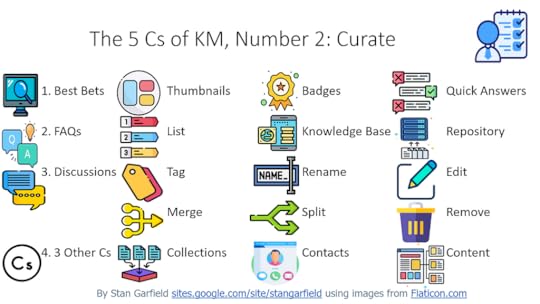 [image error]
[image error]



